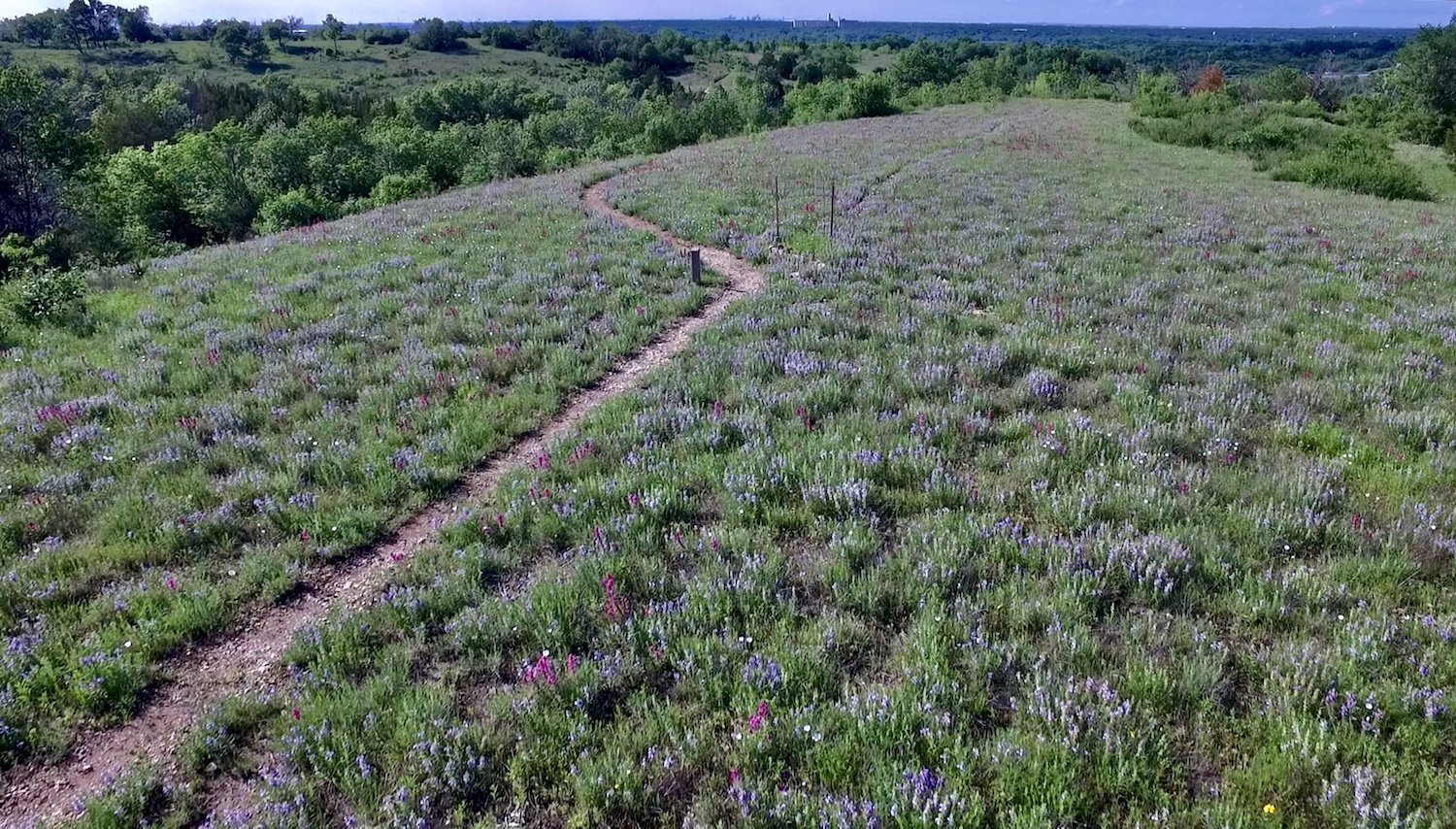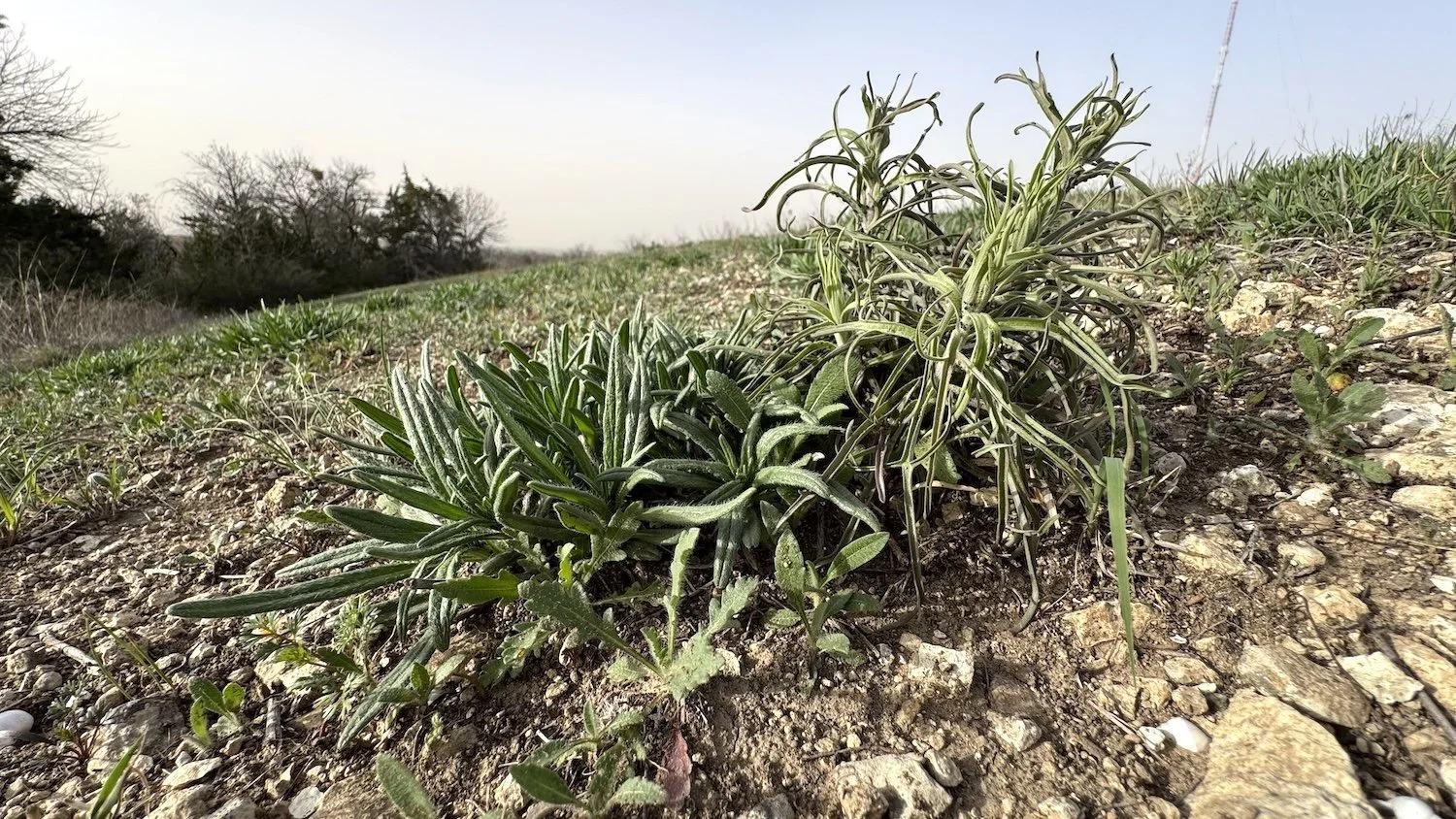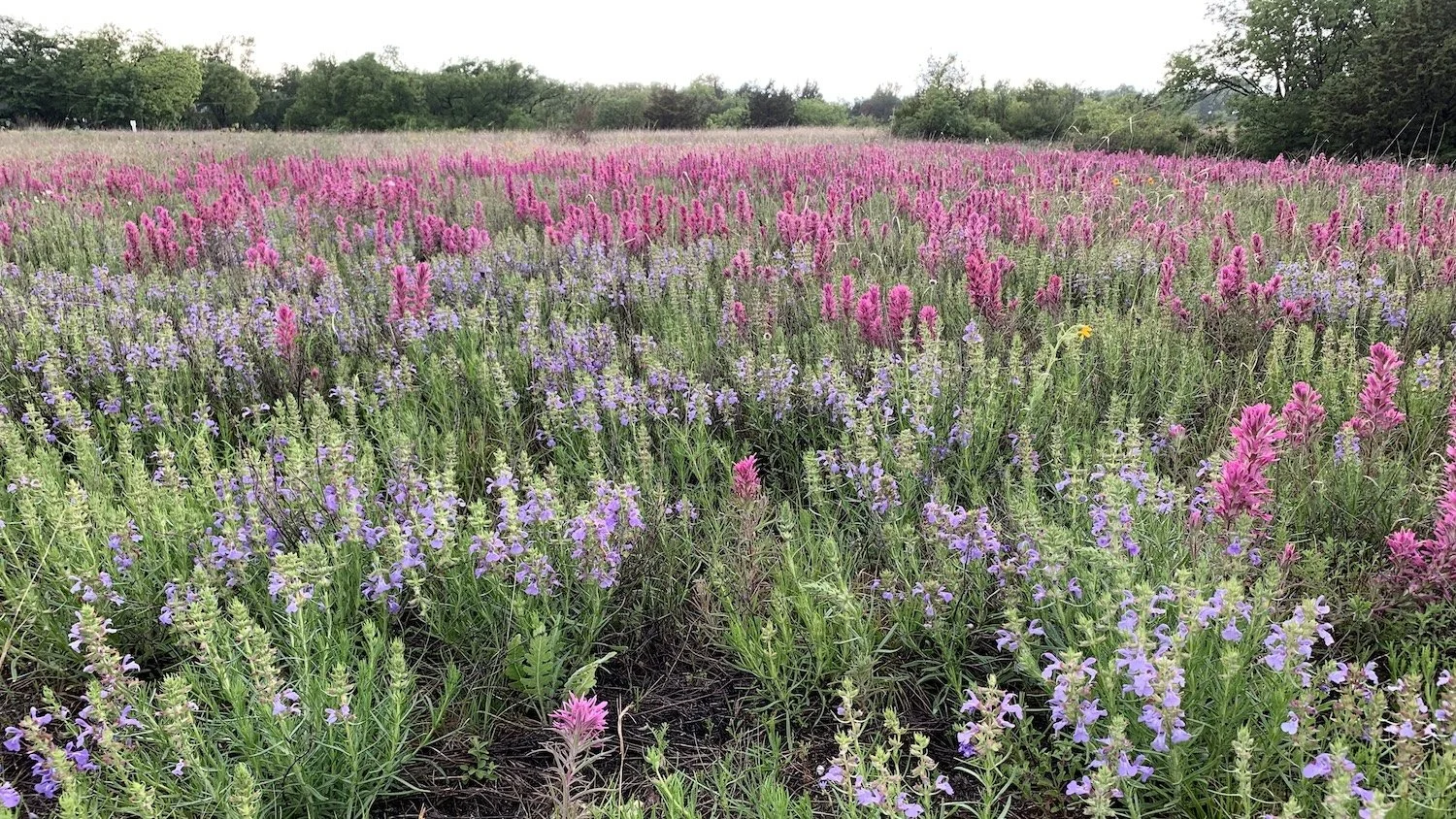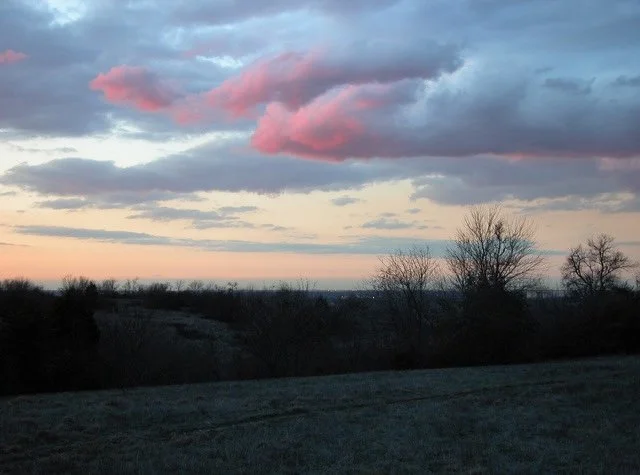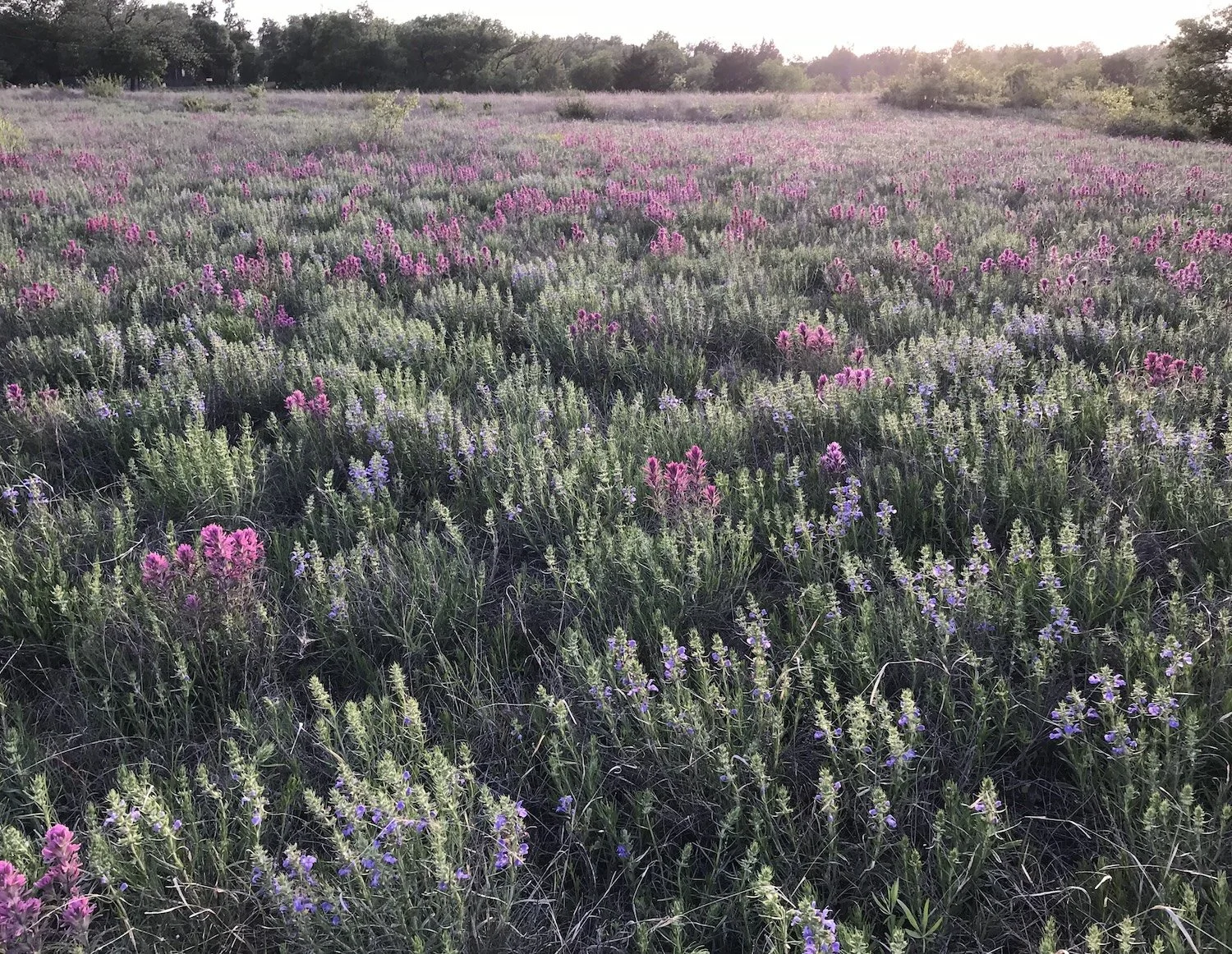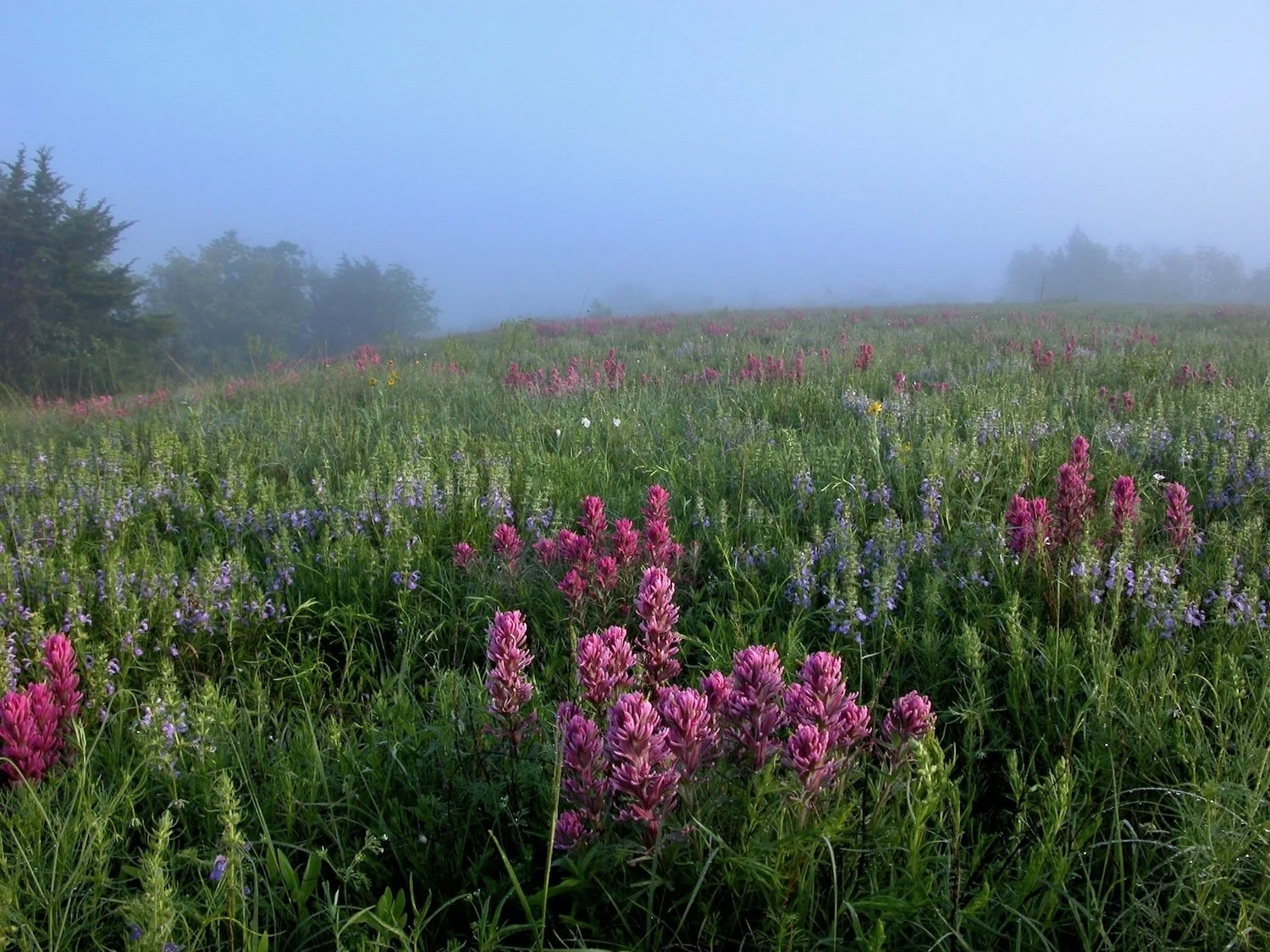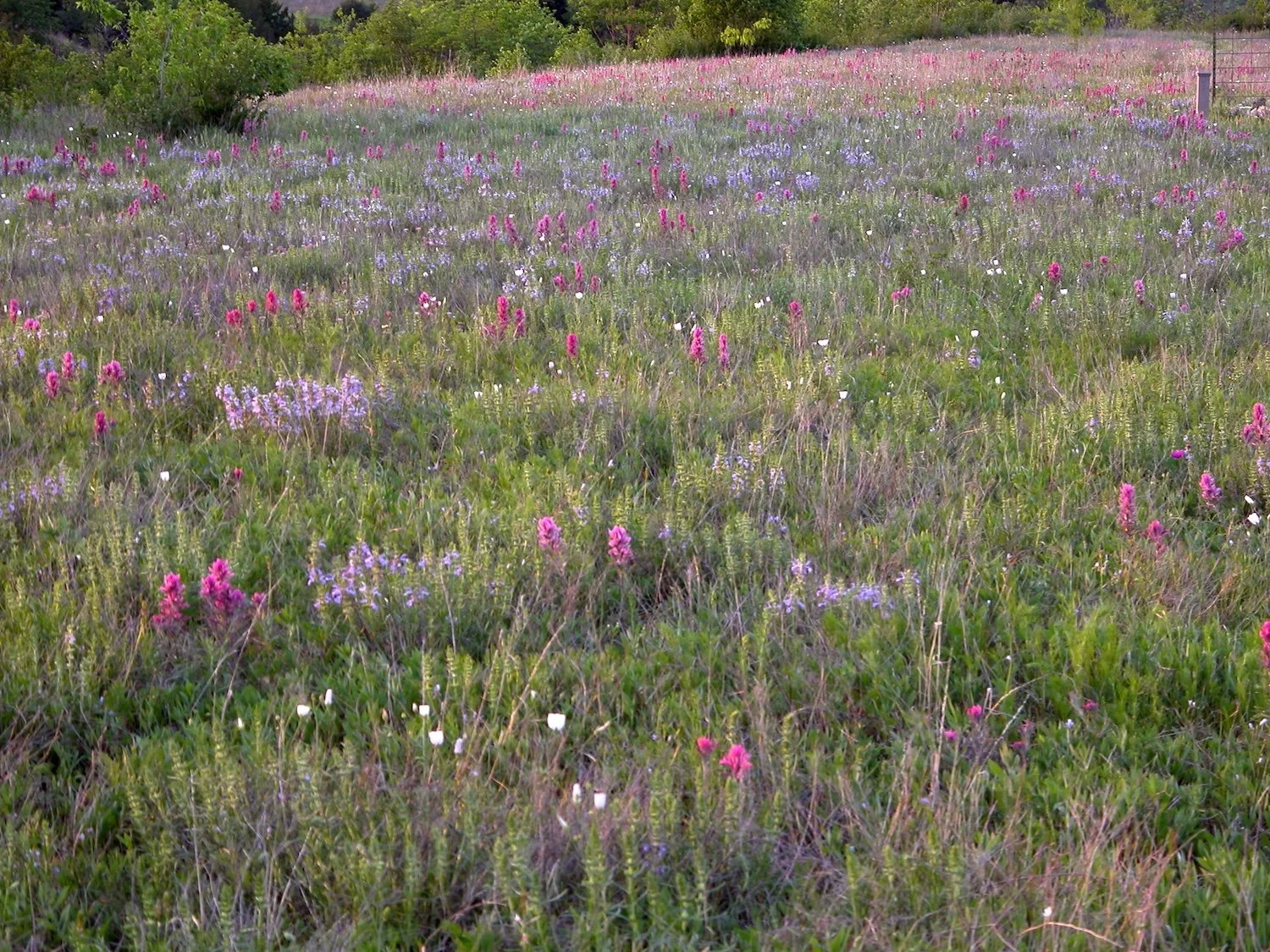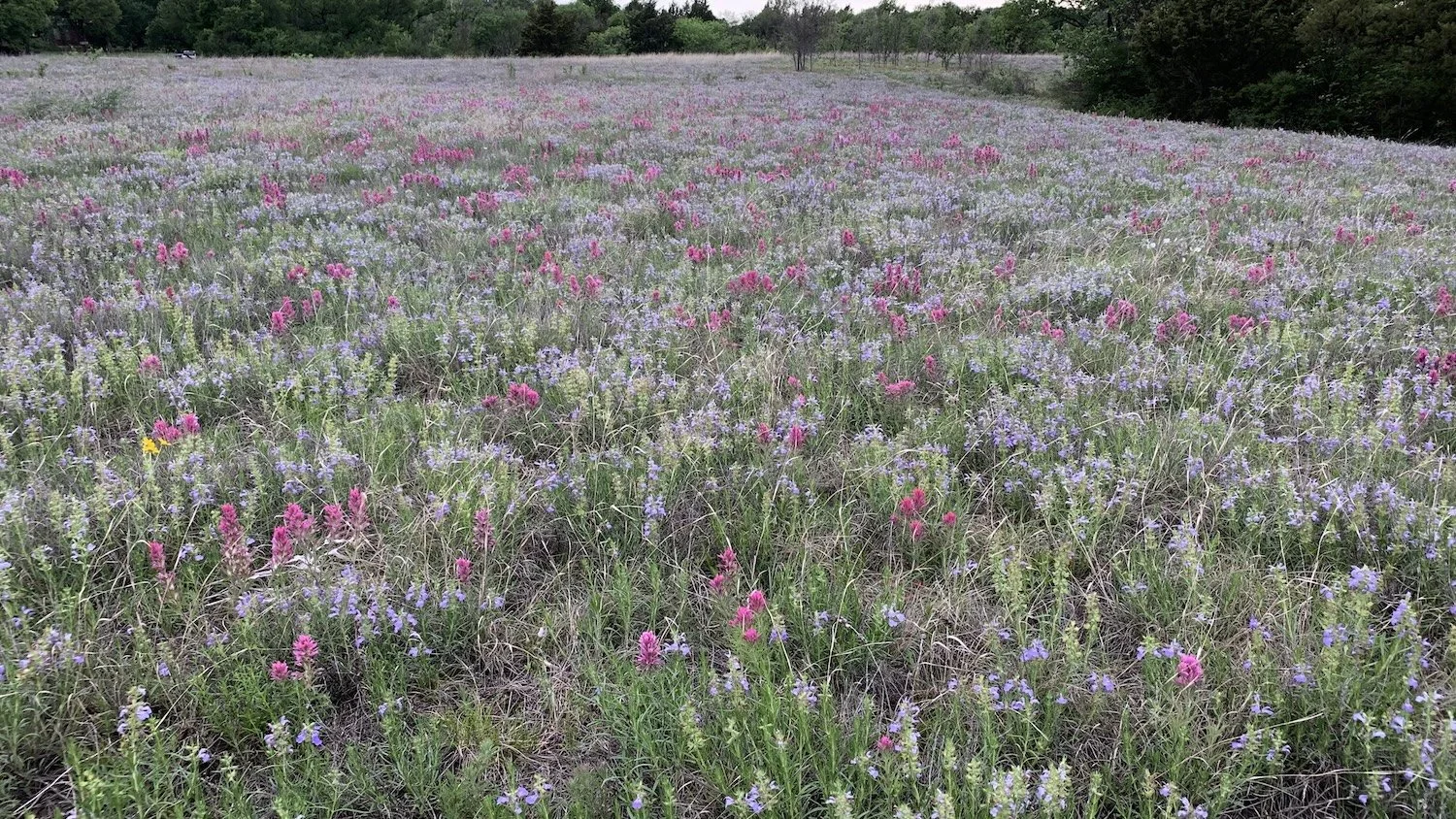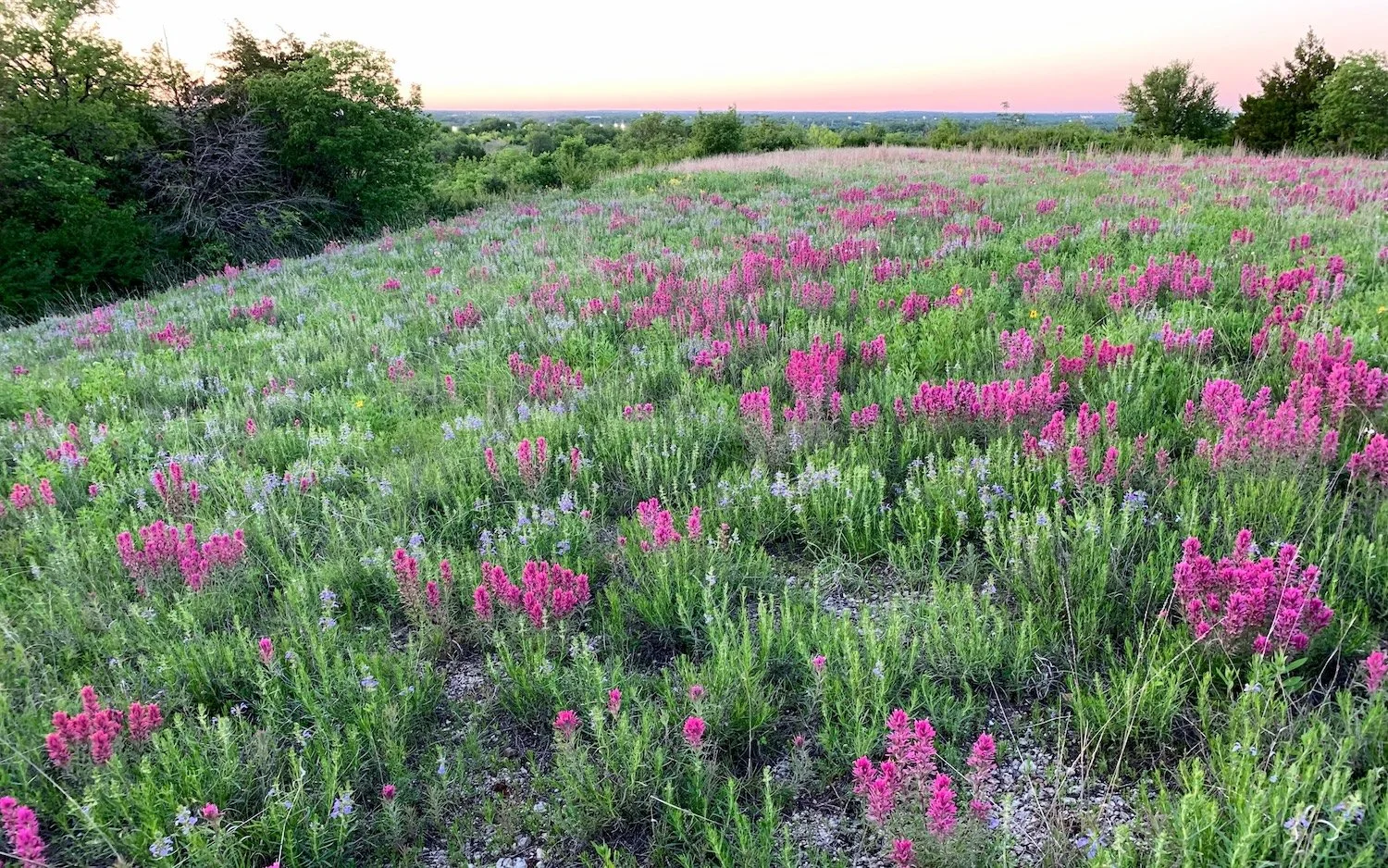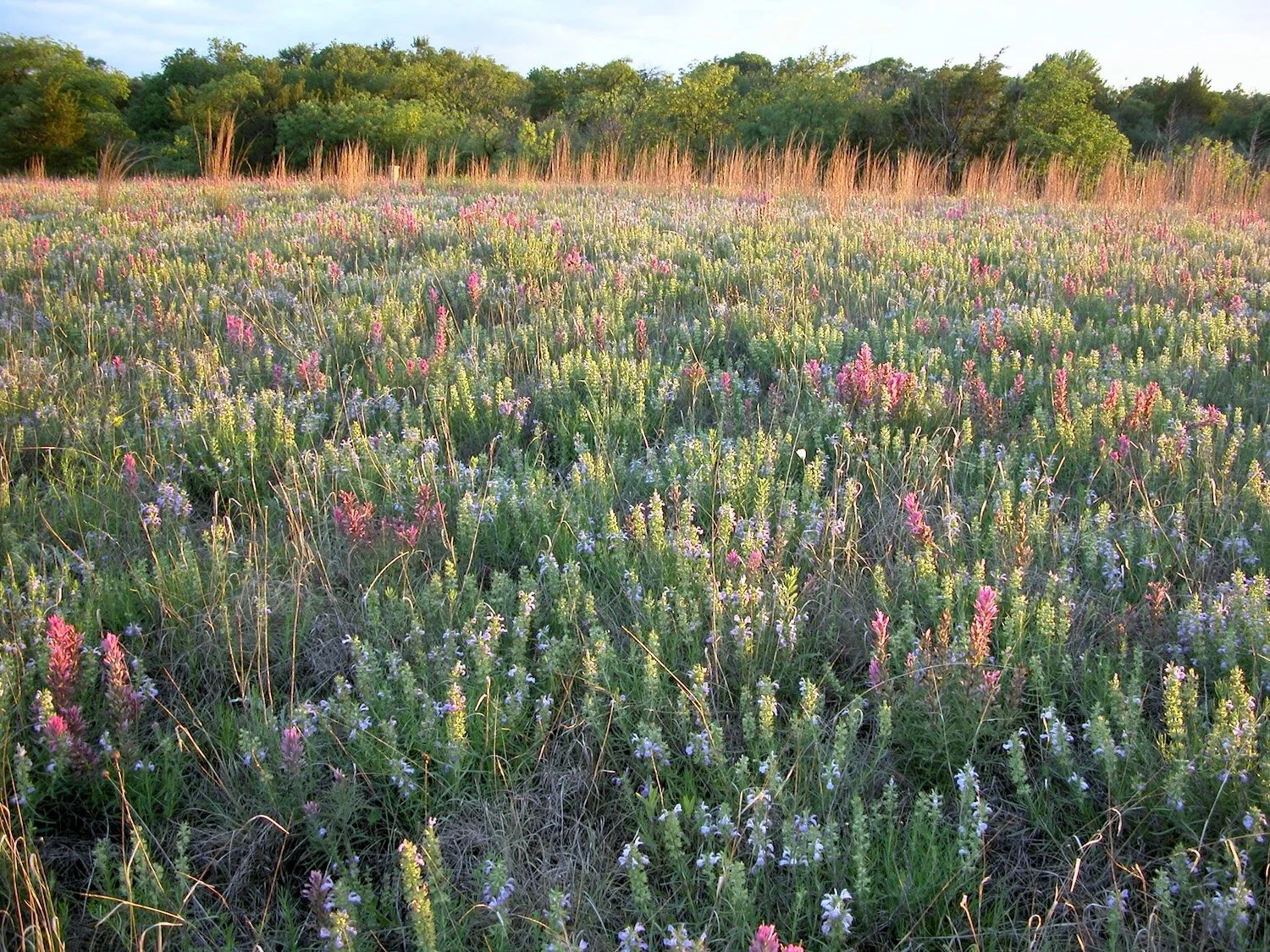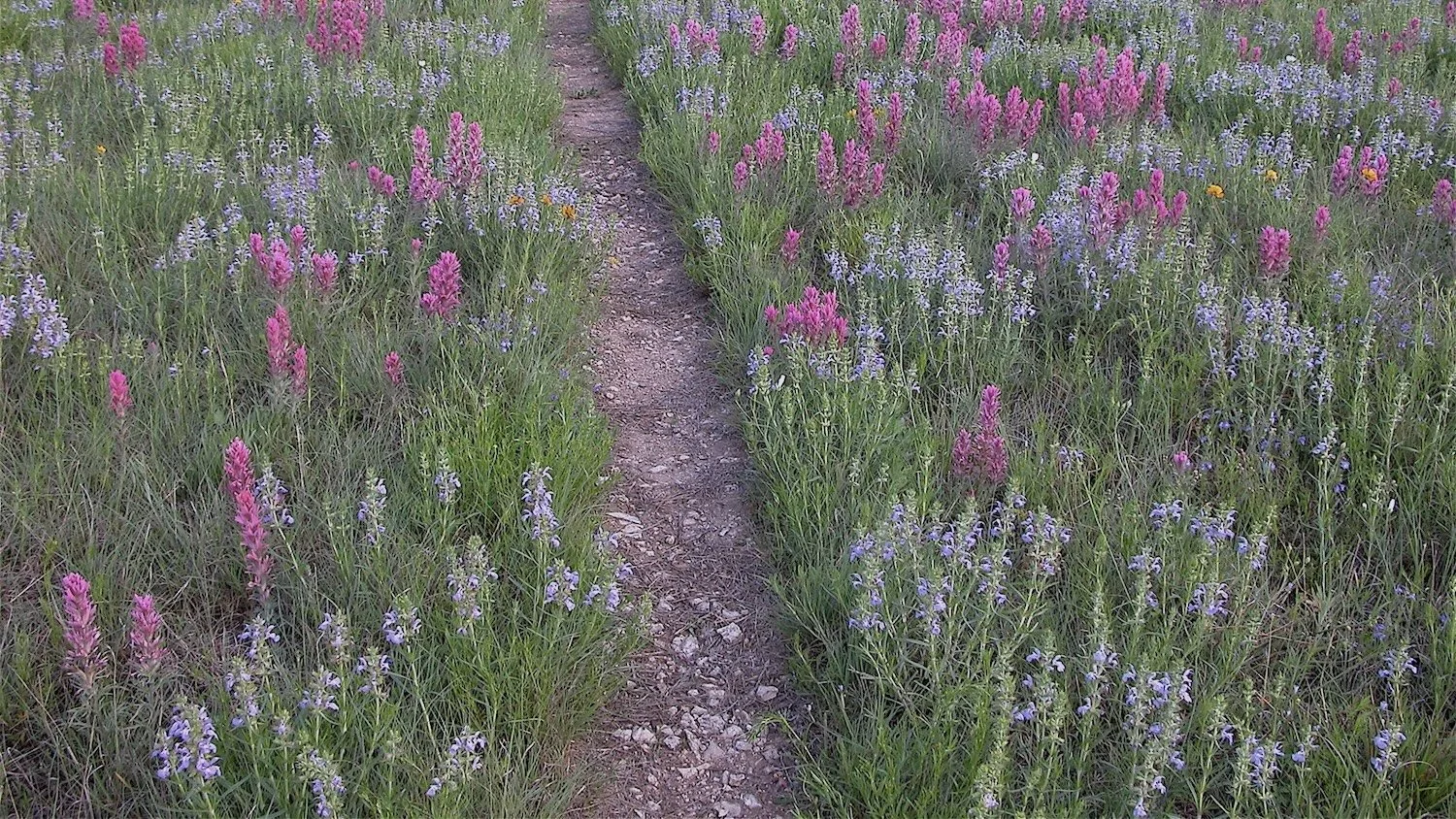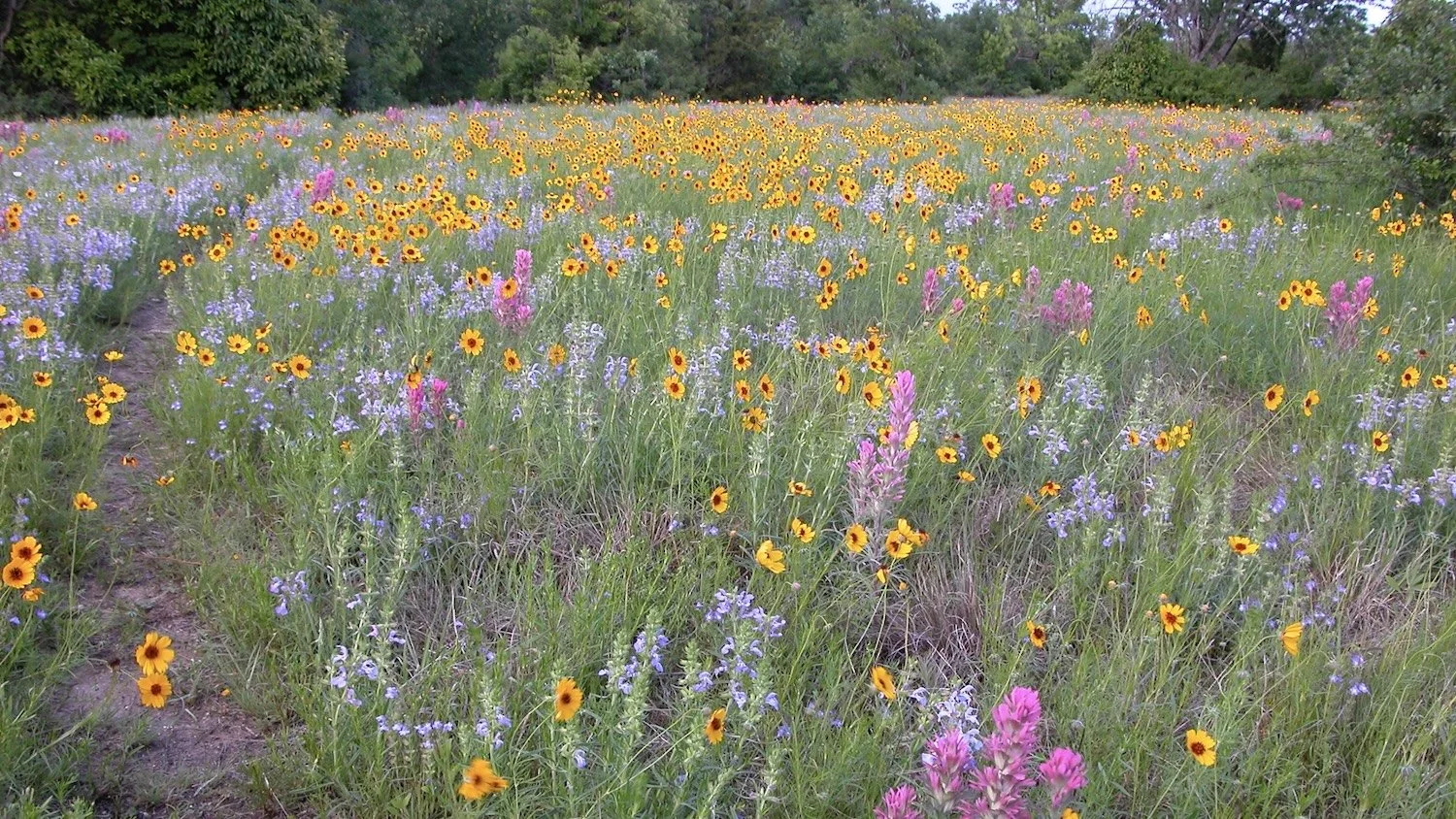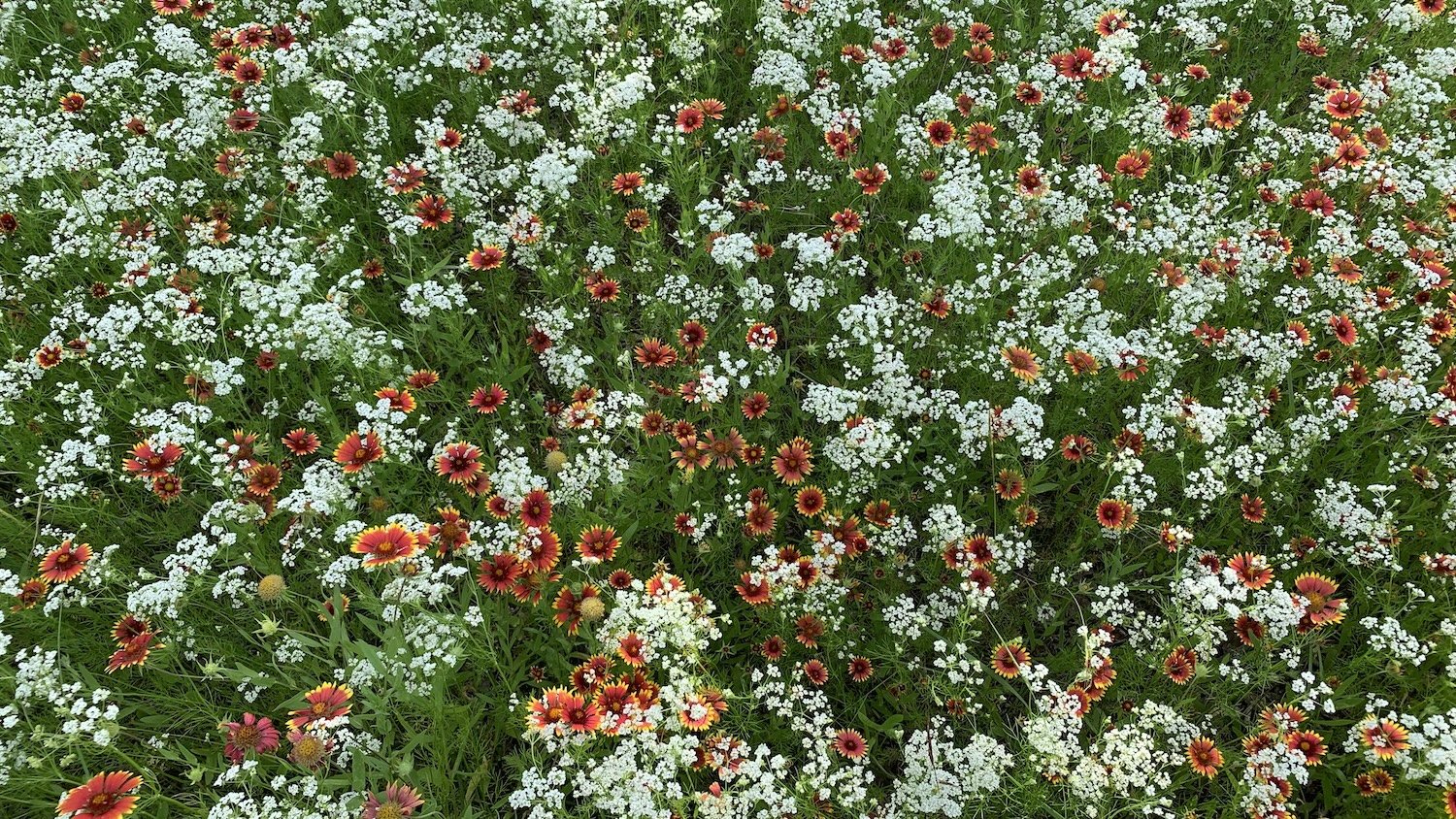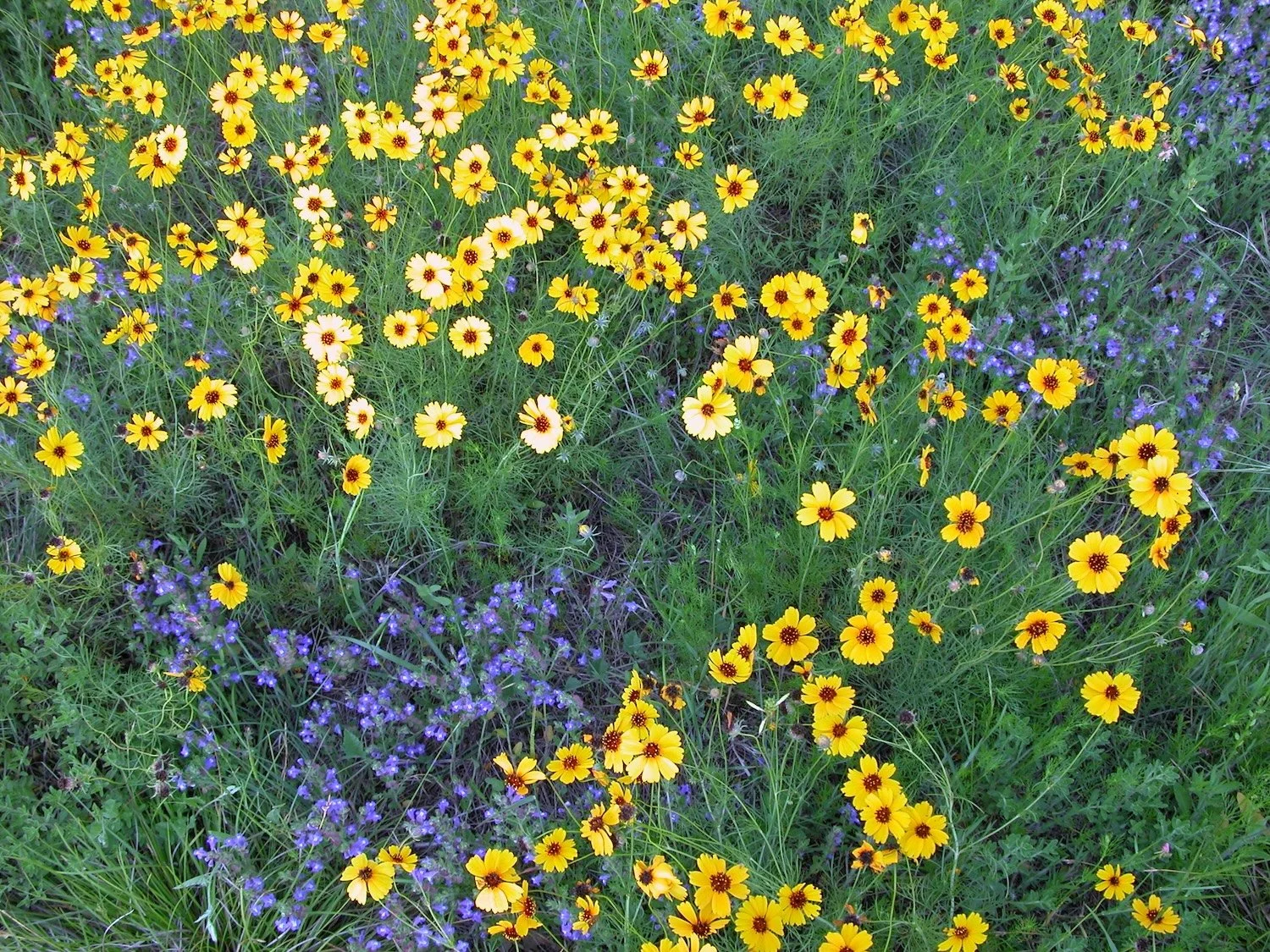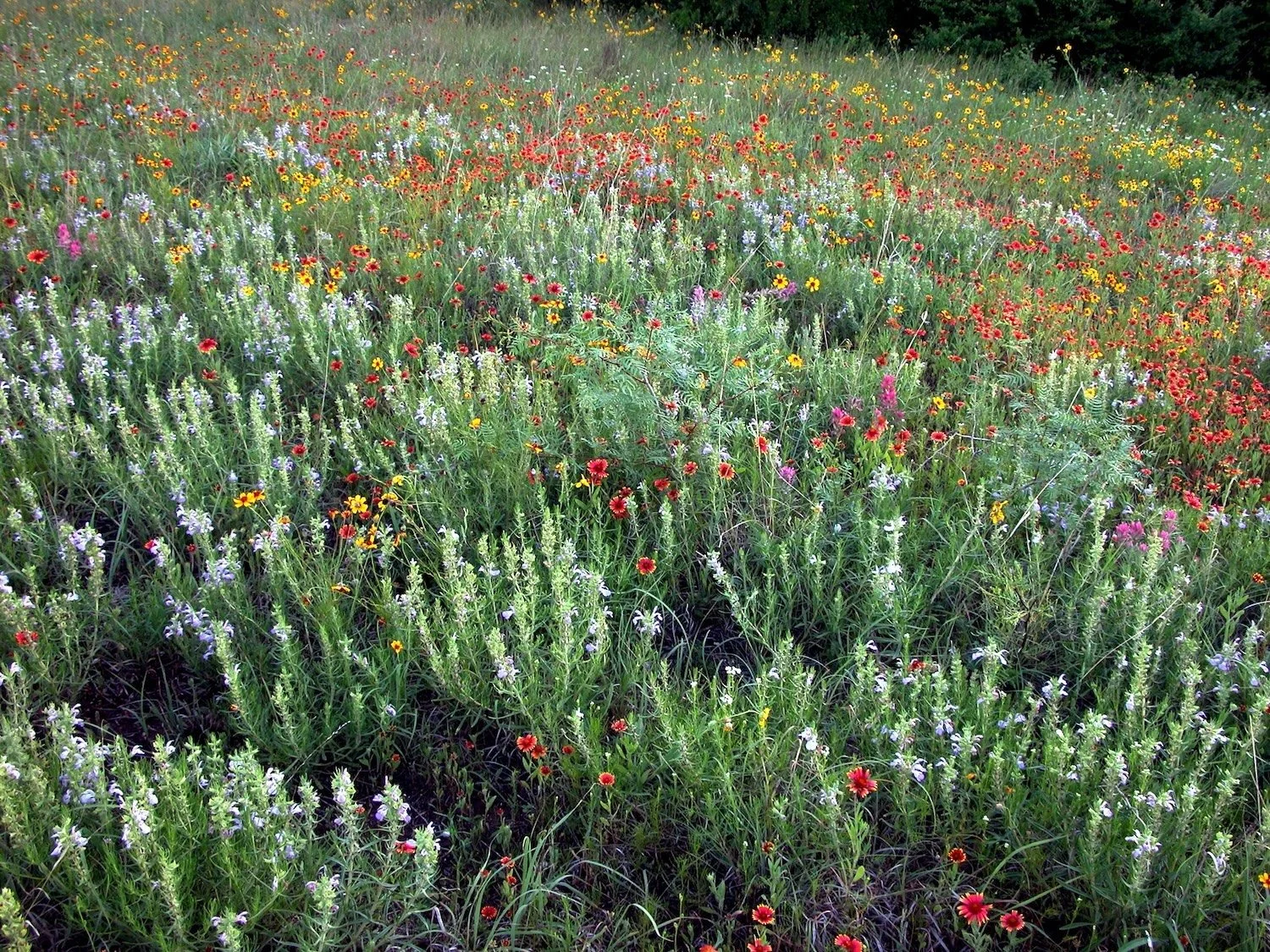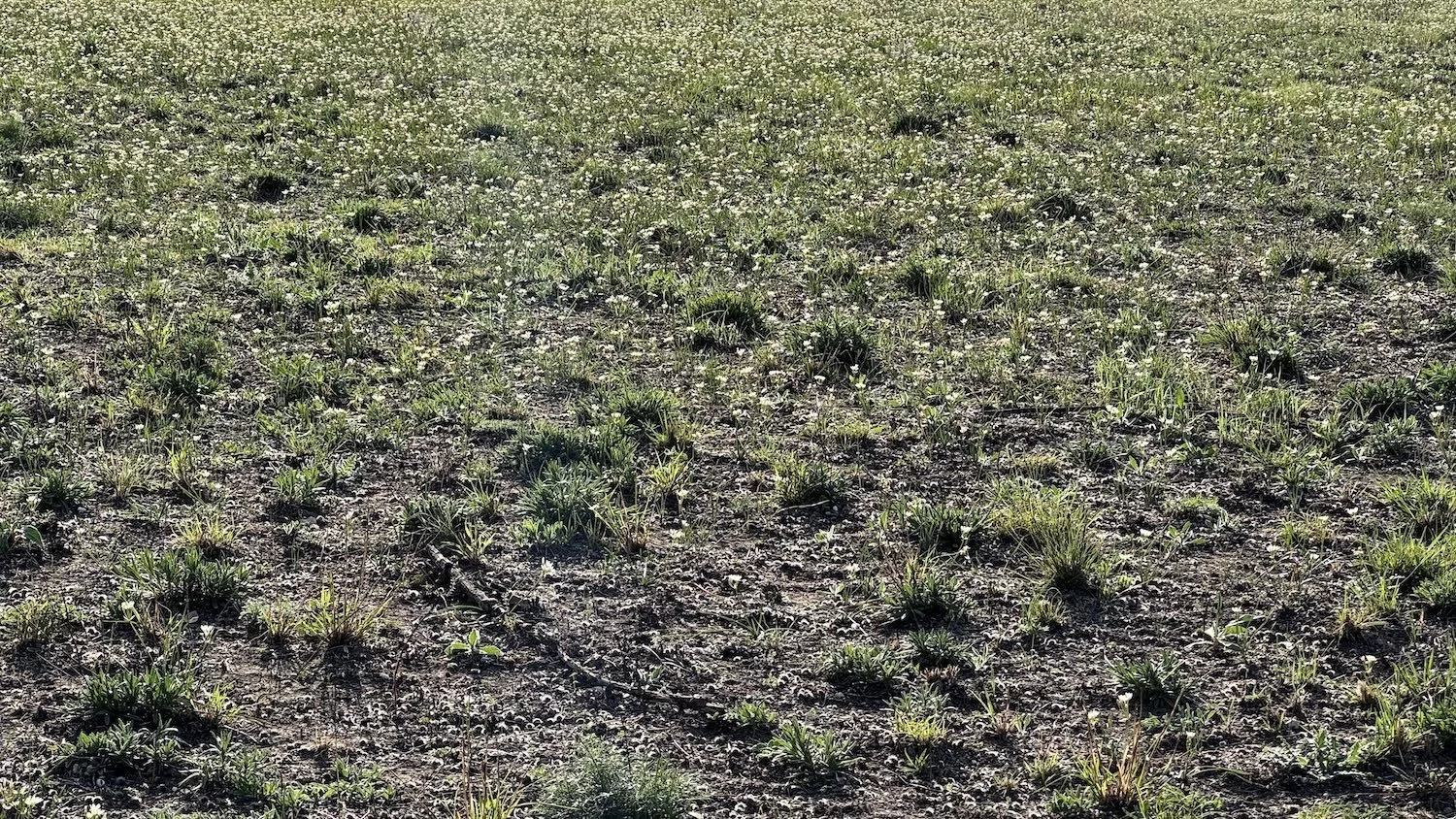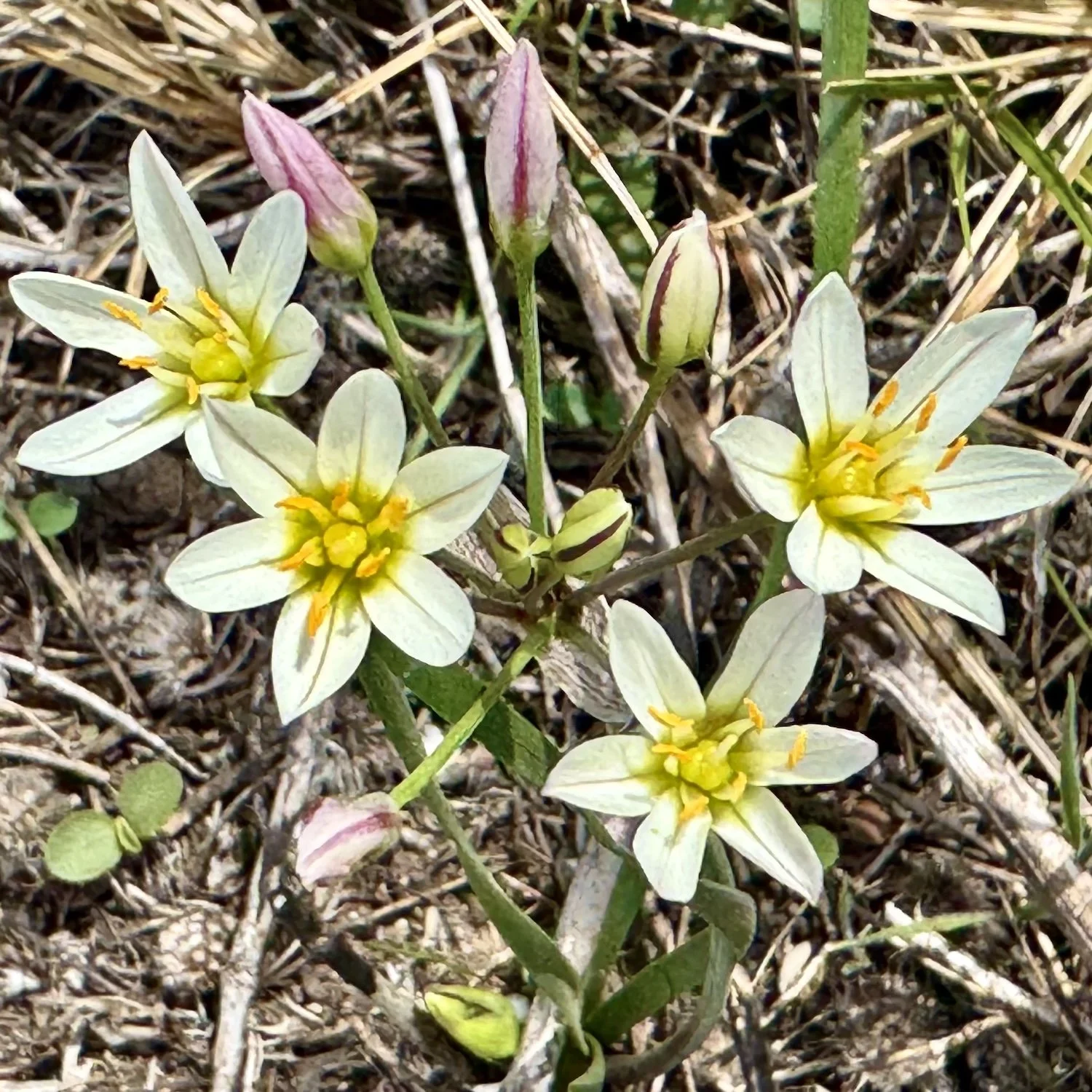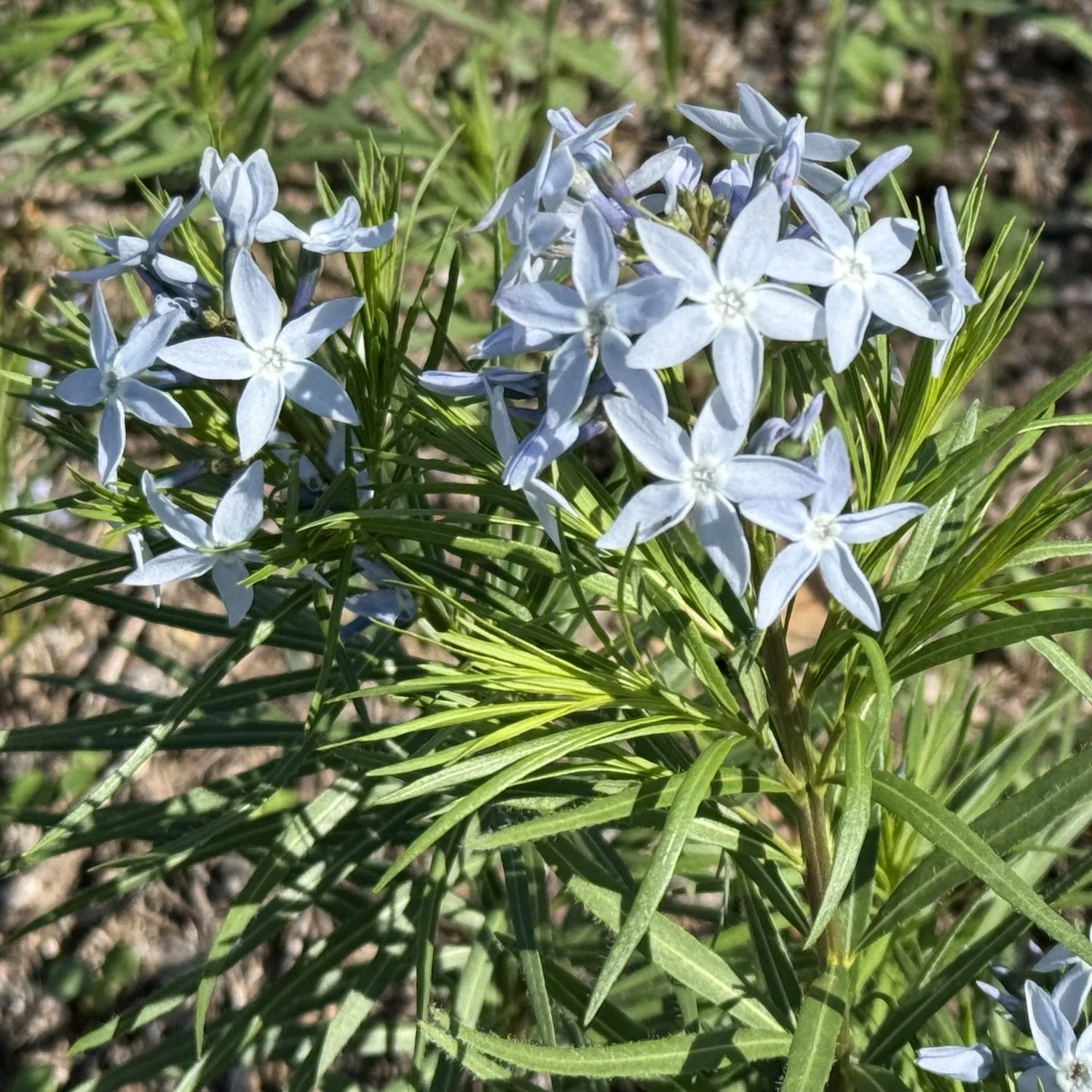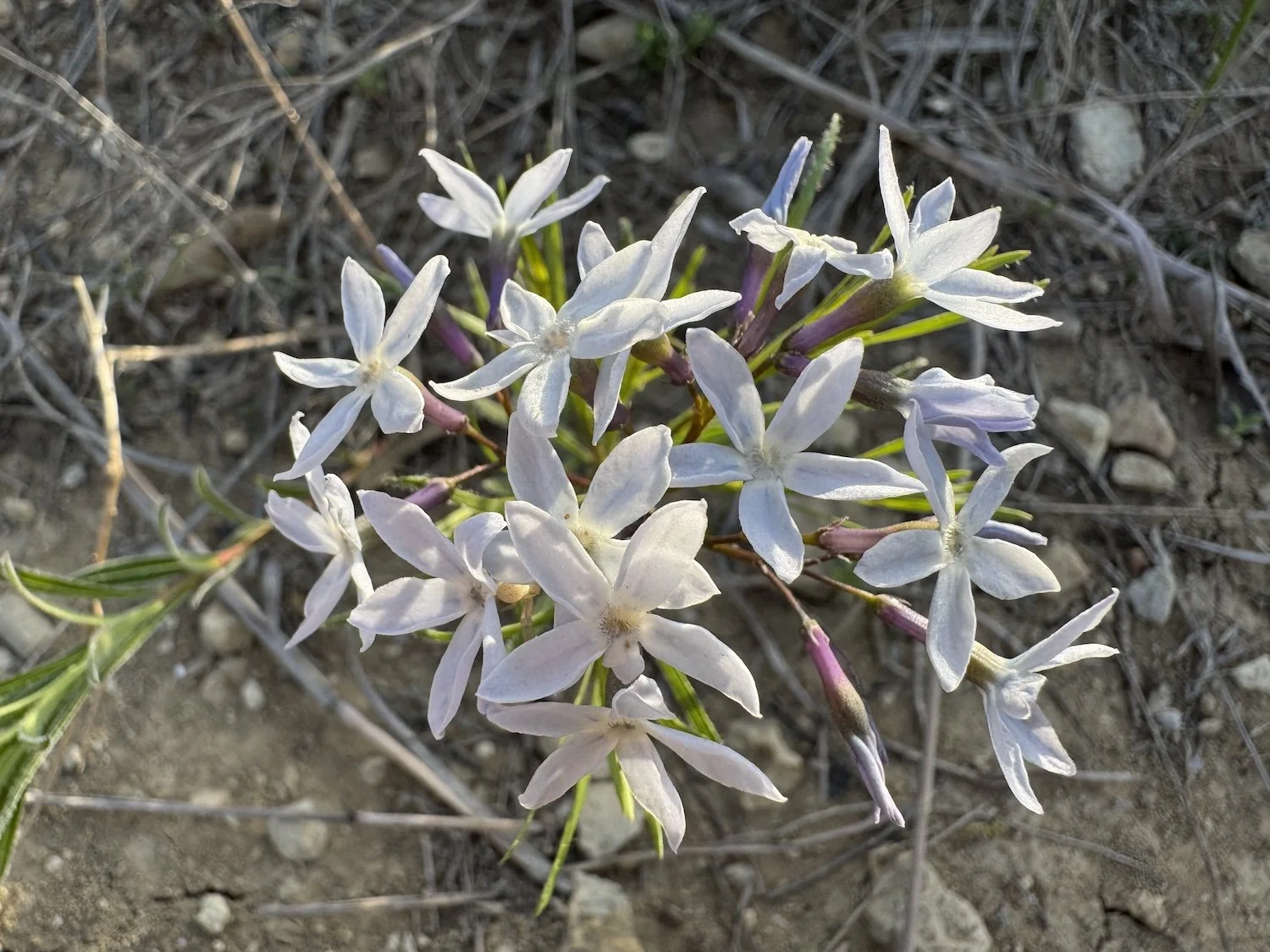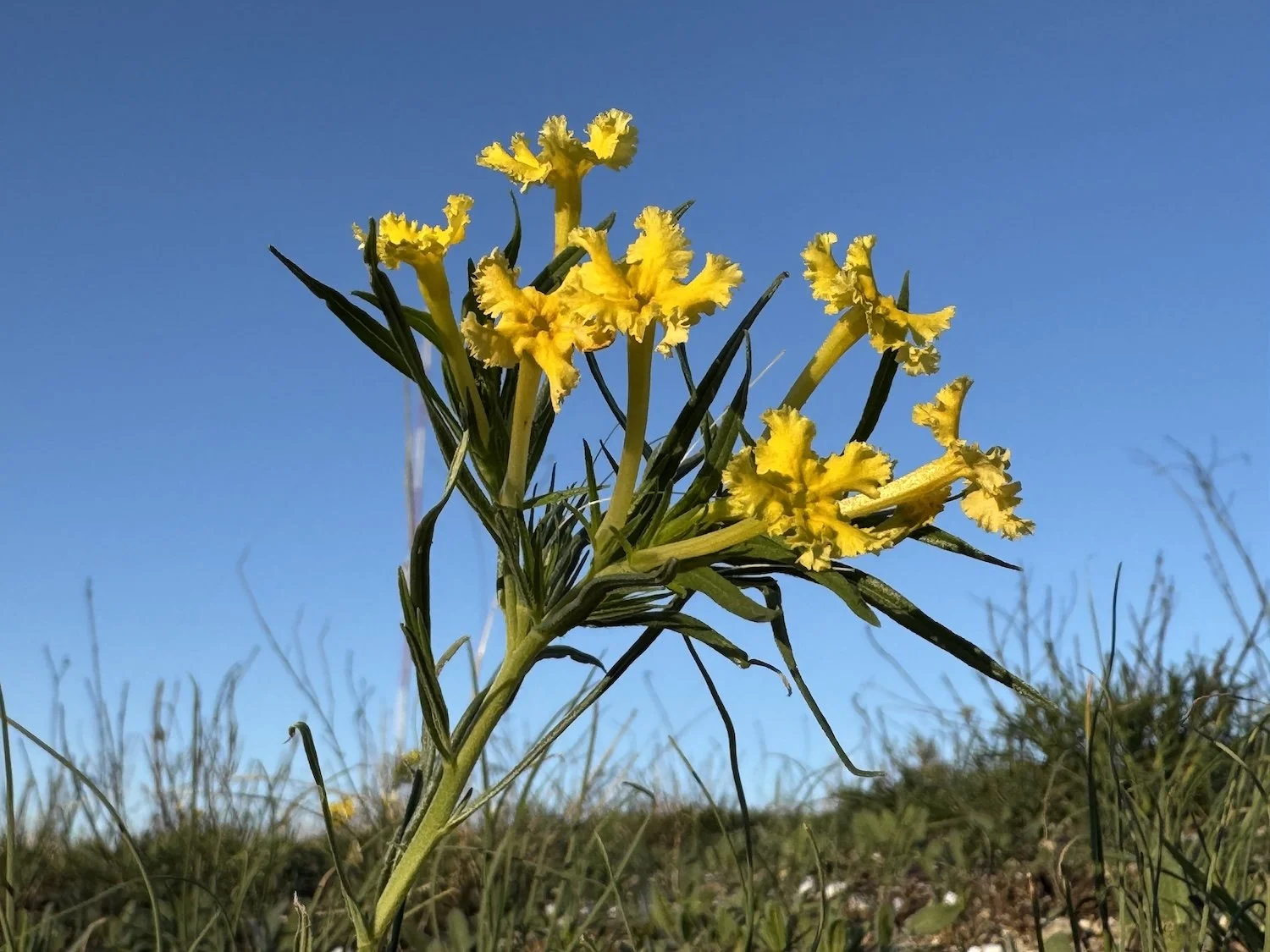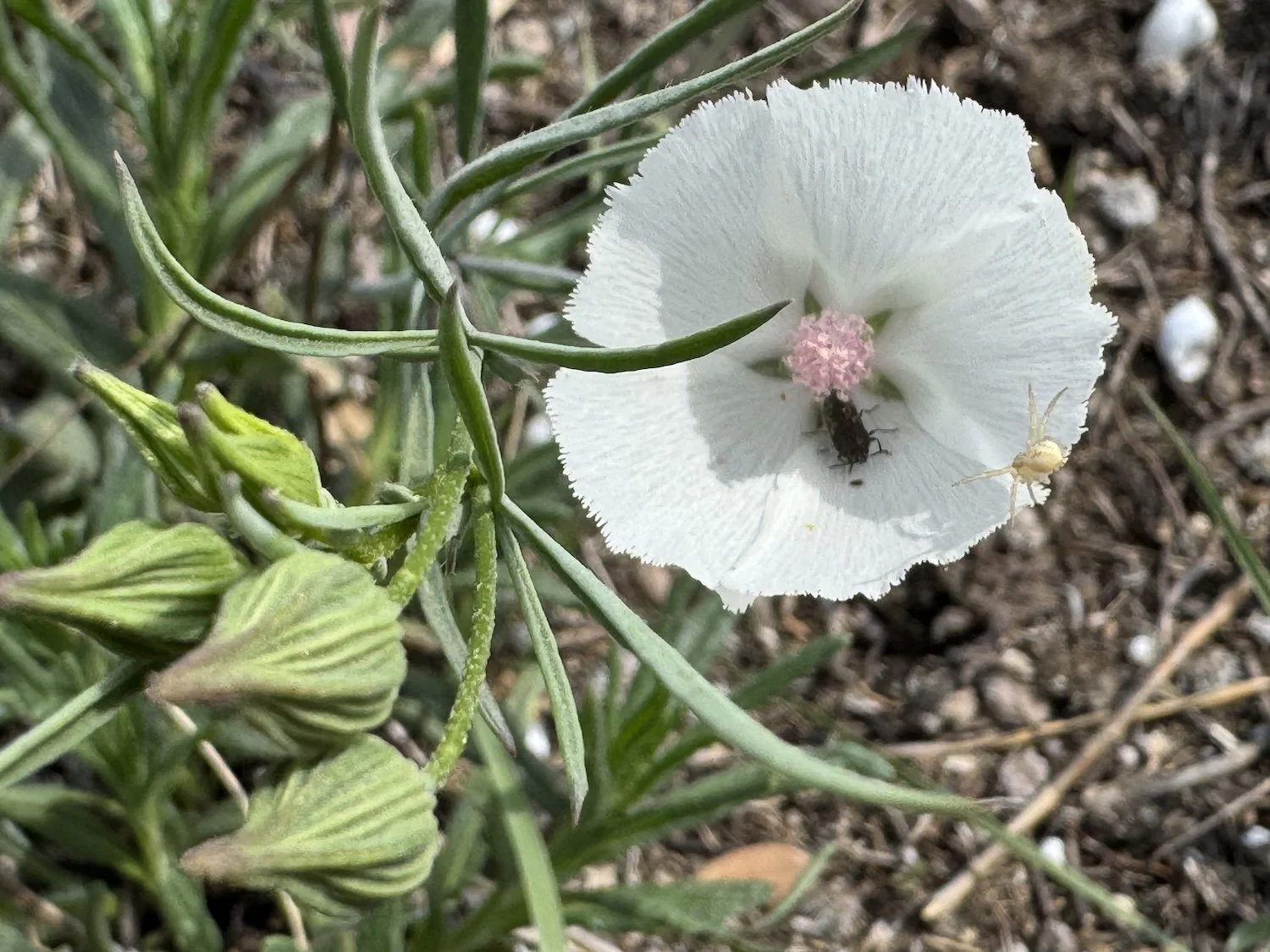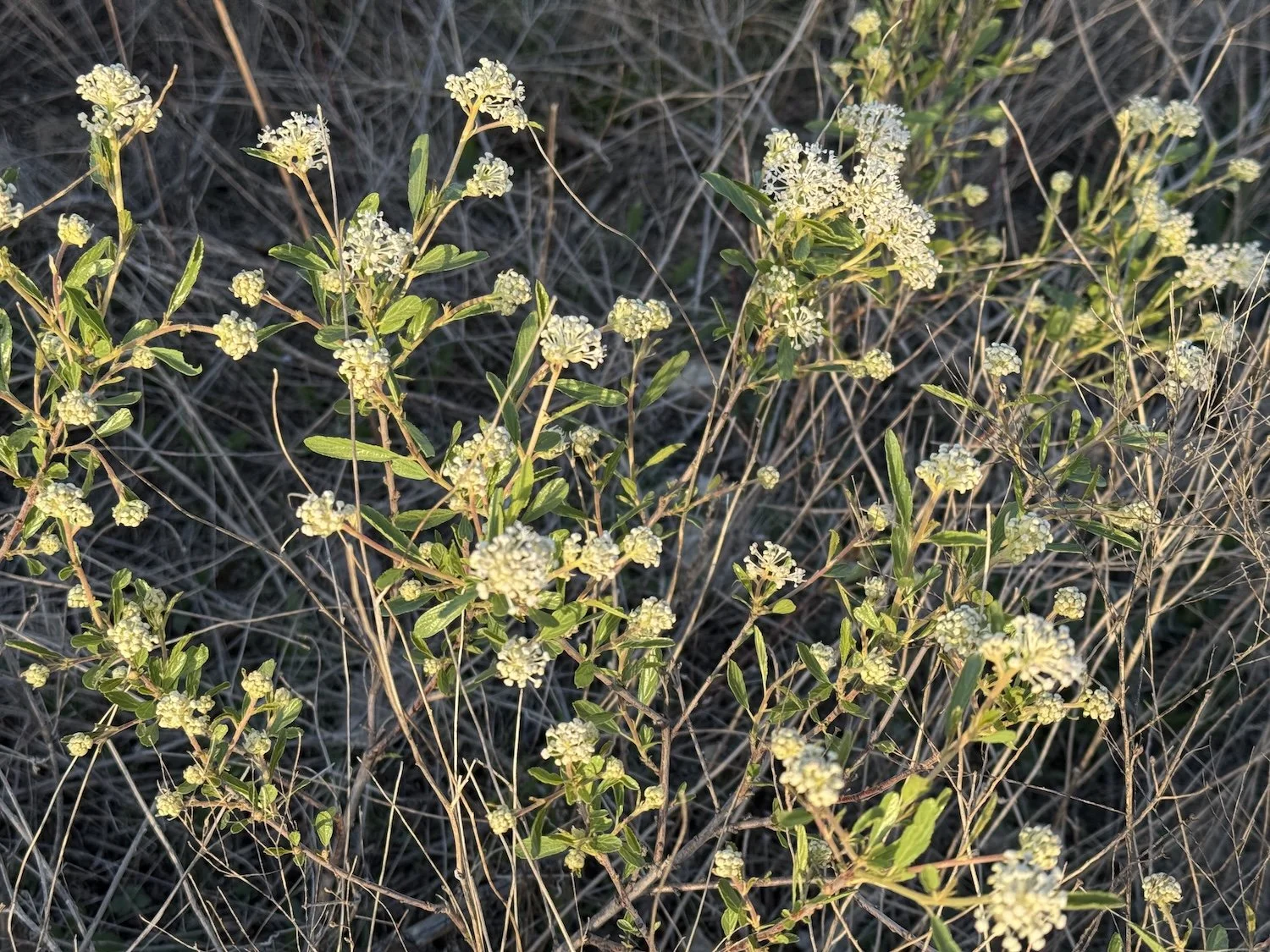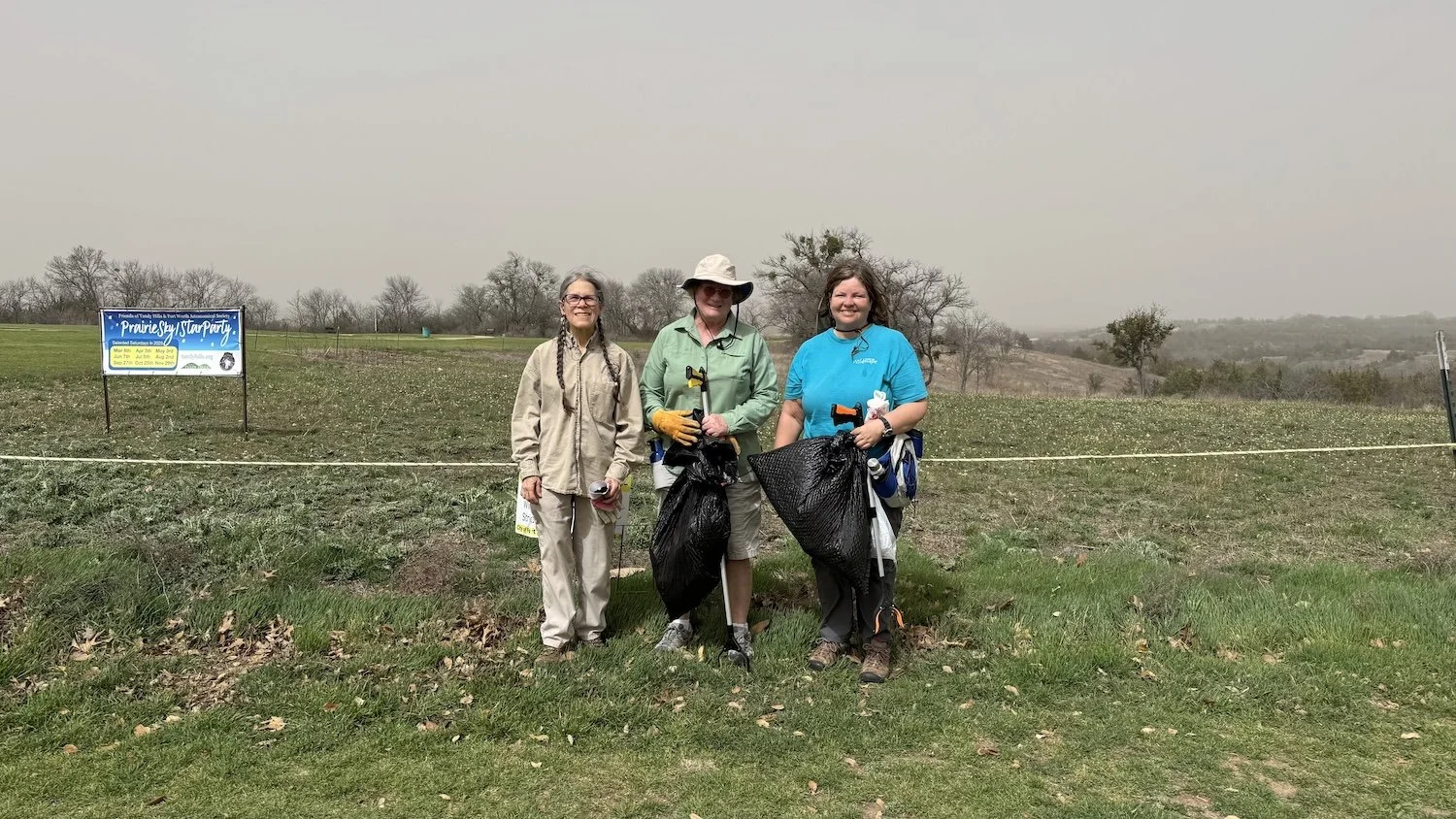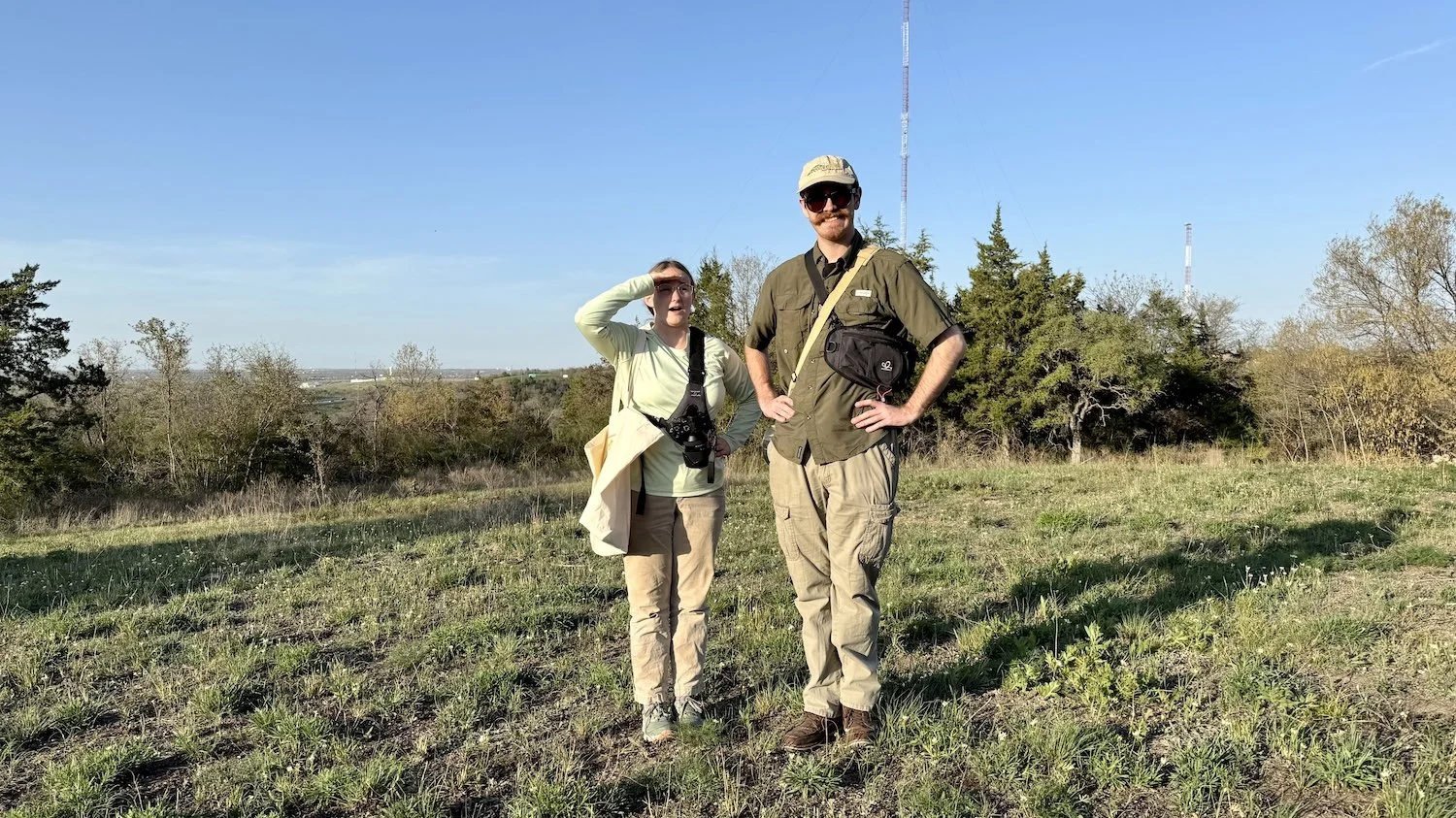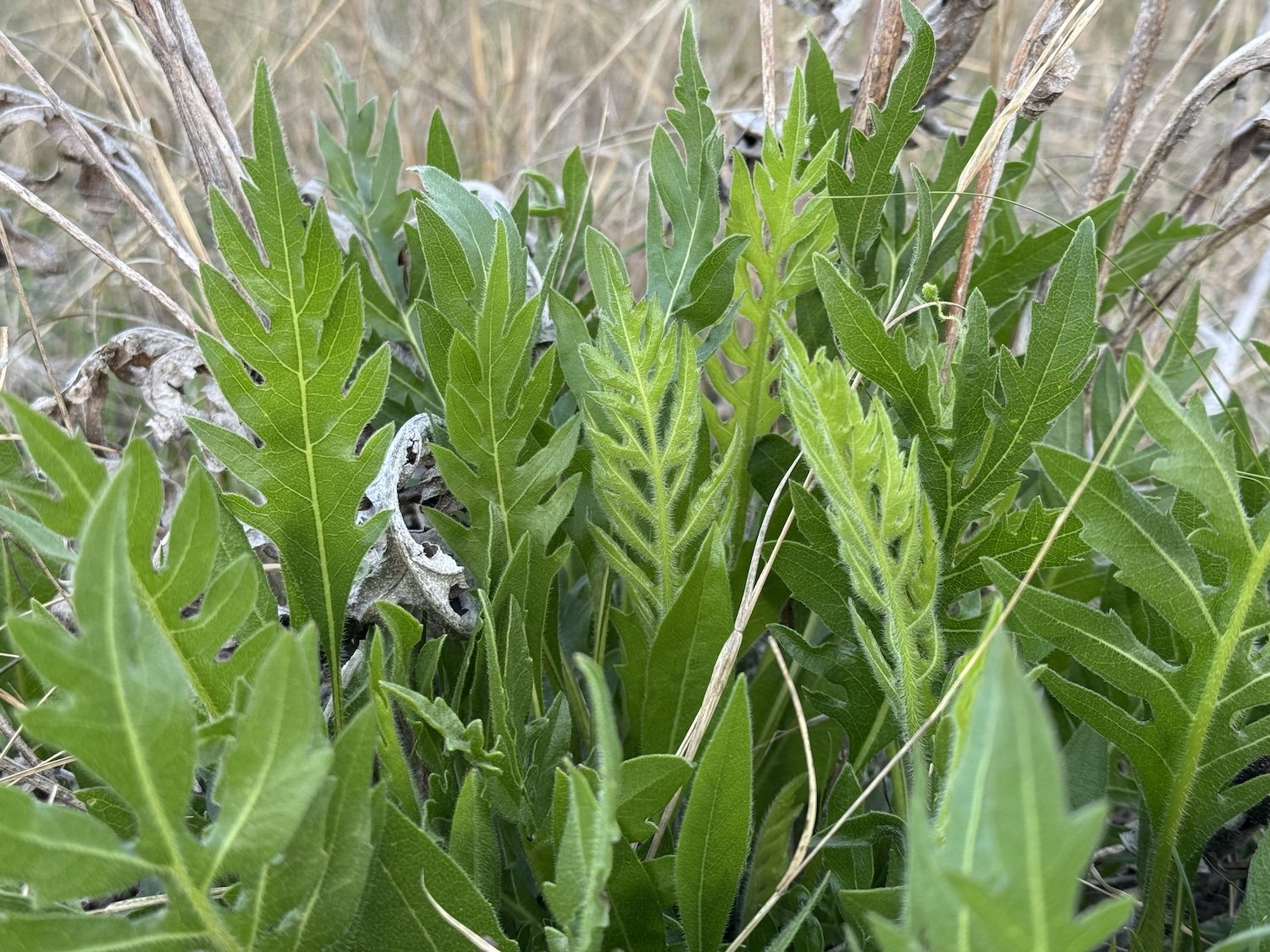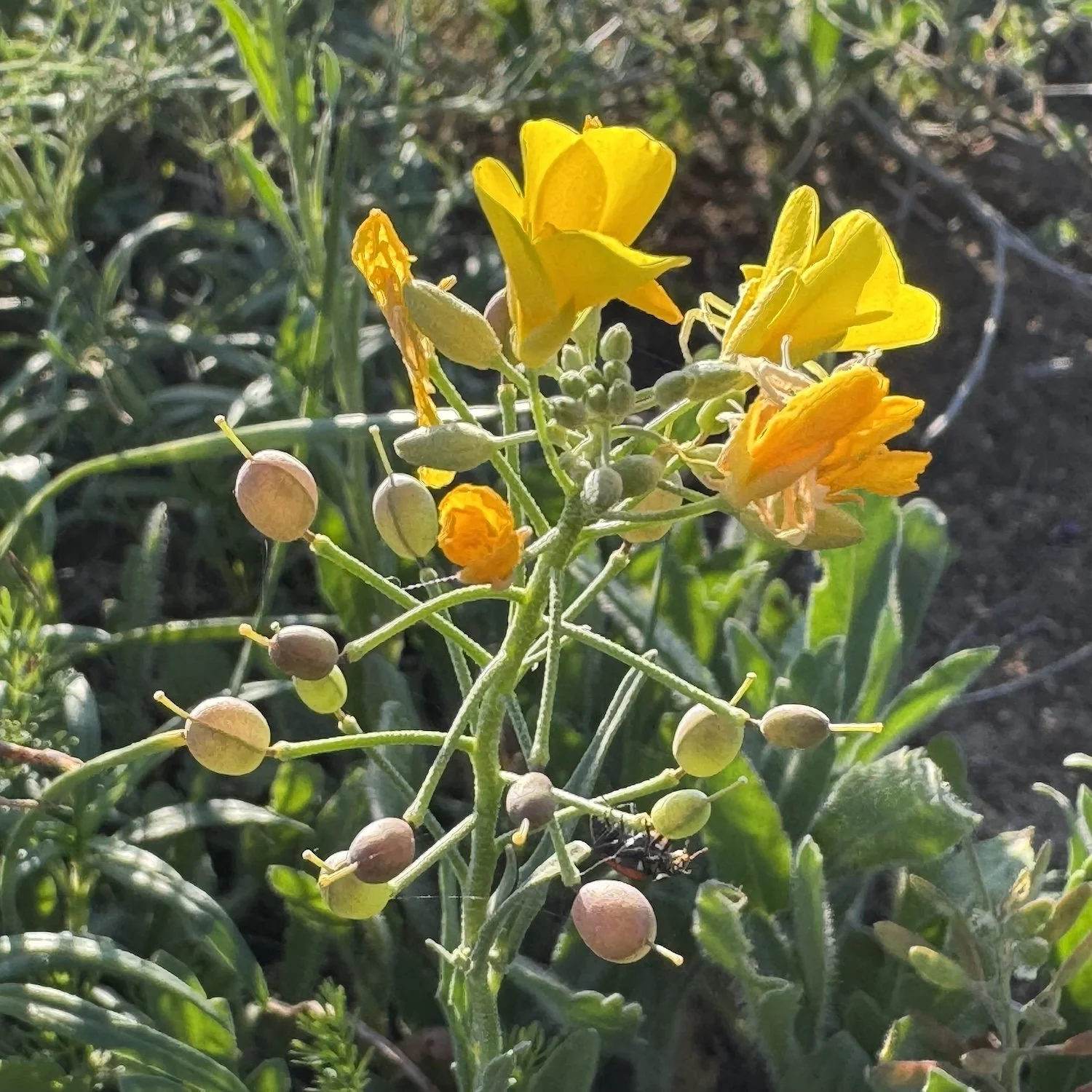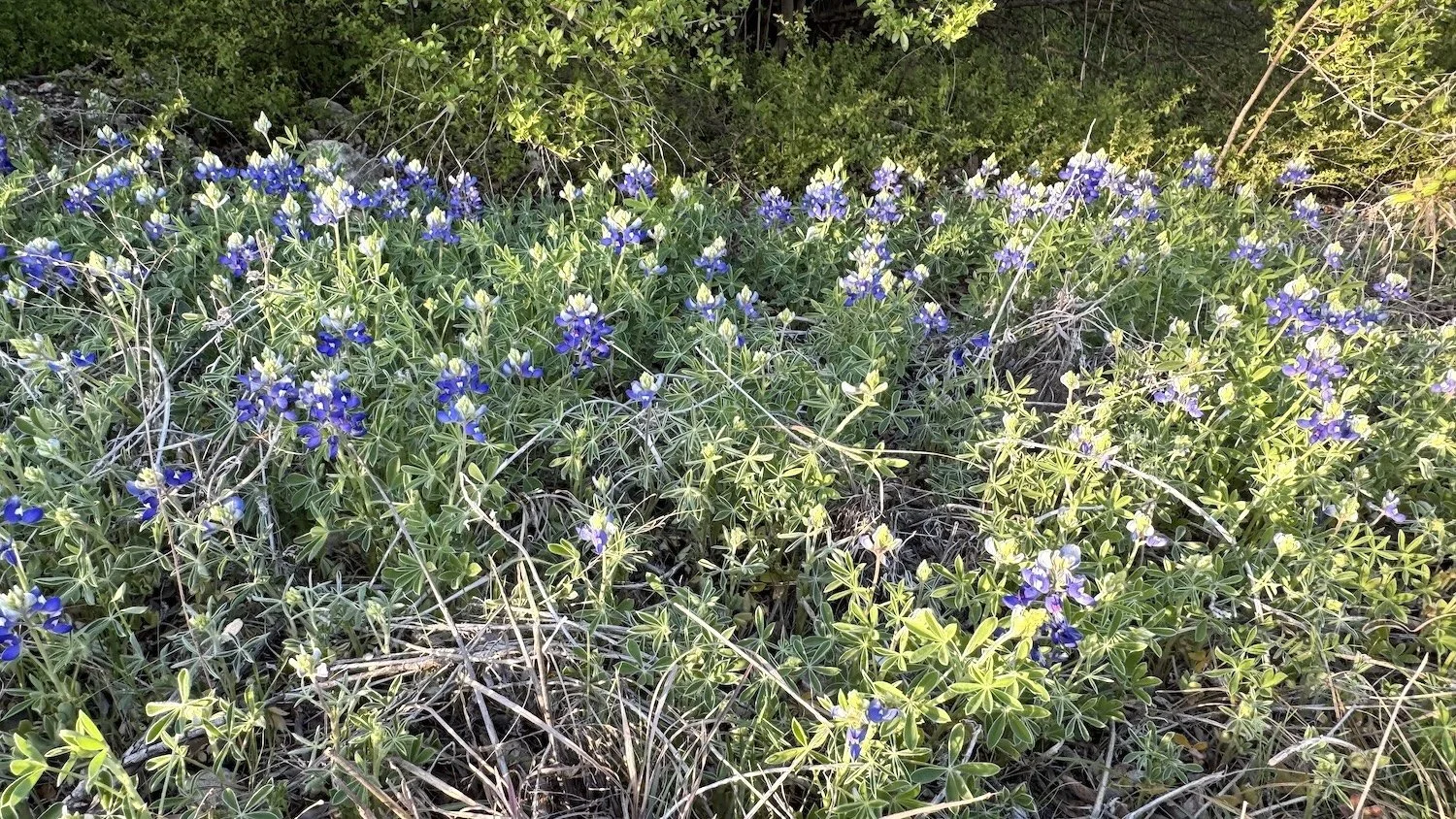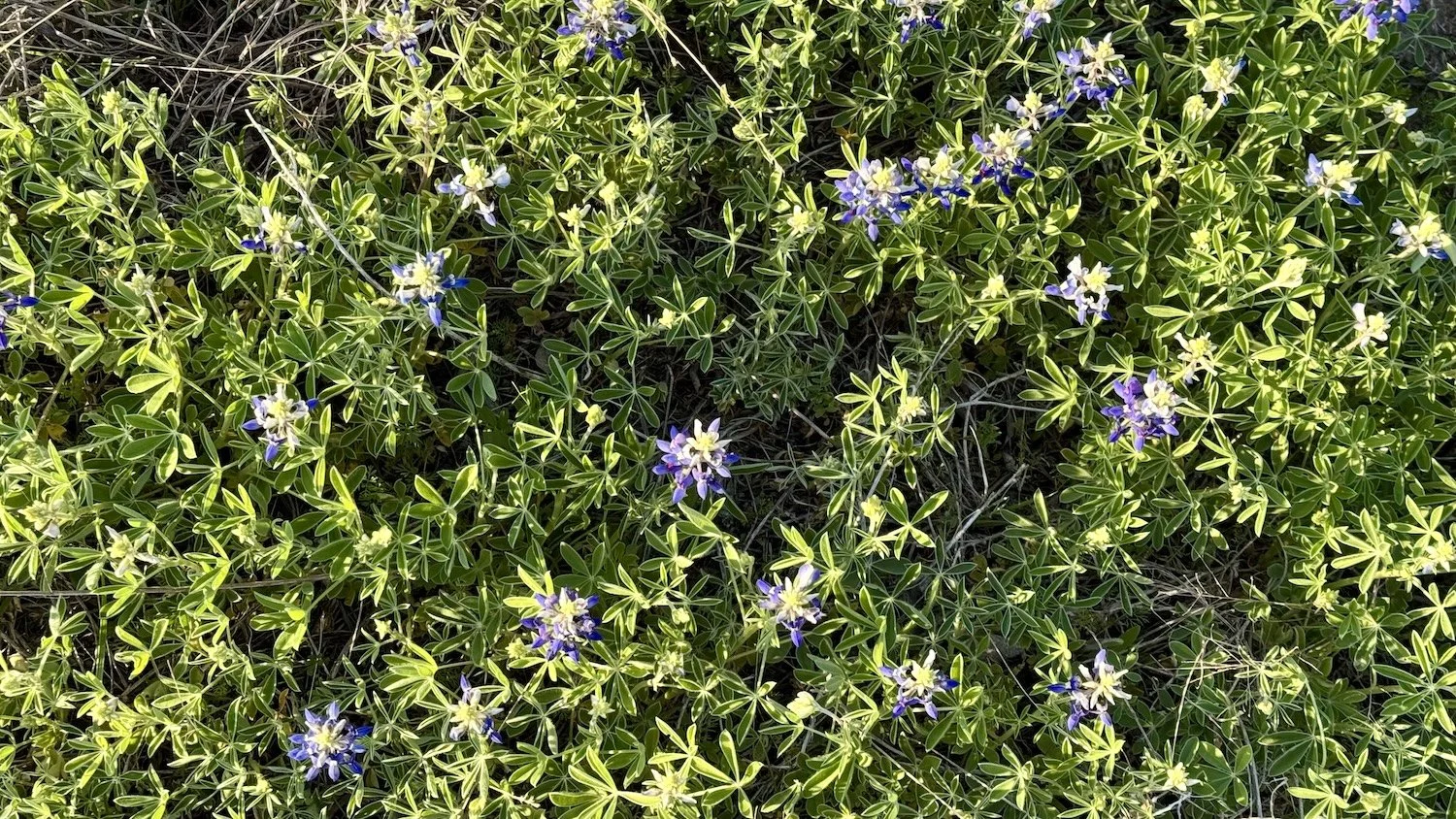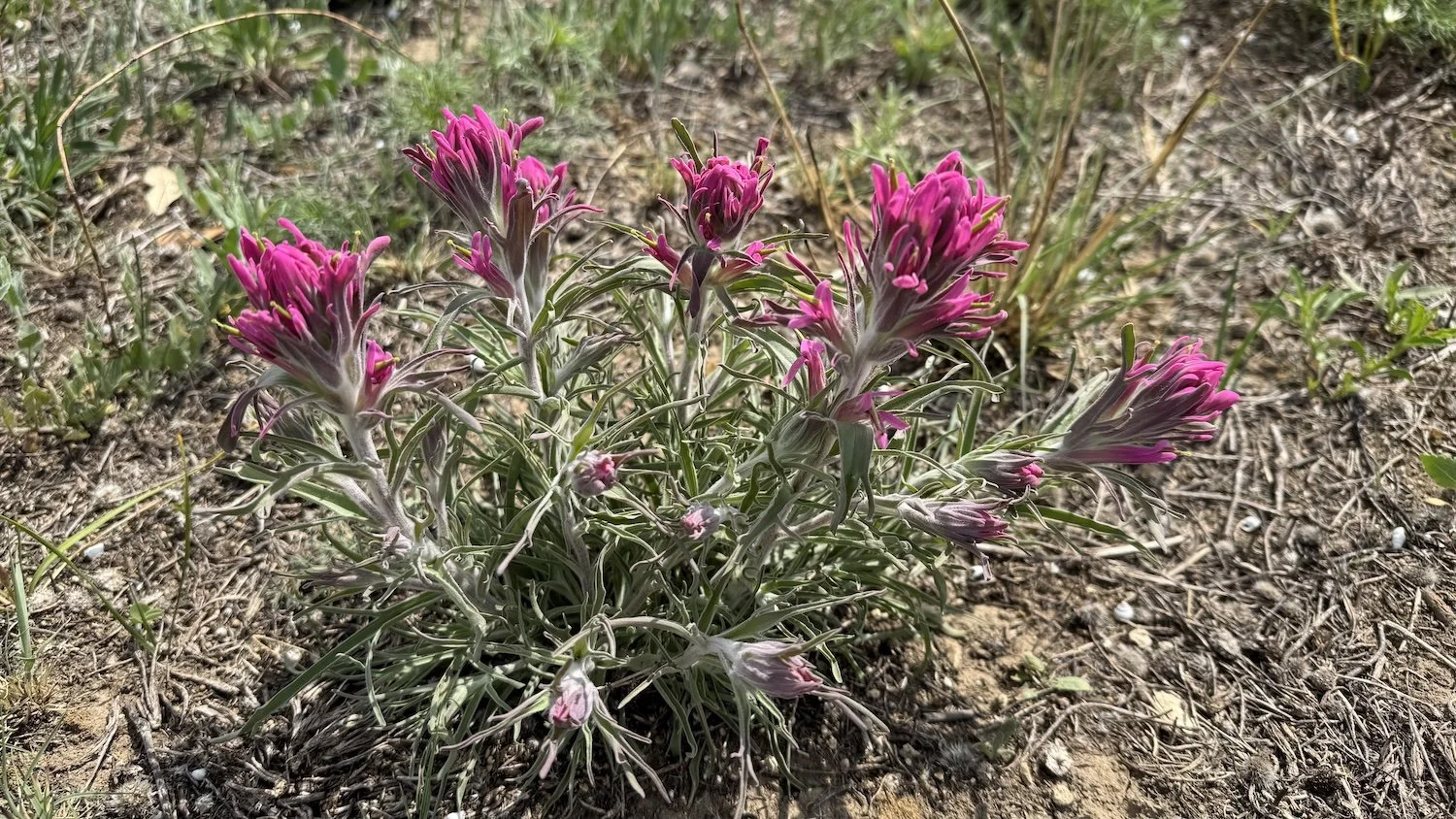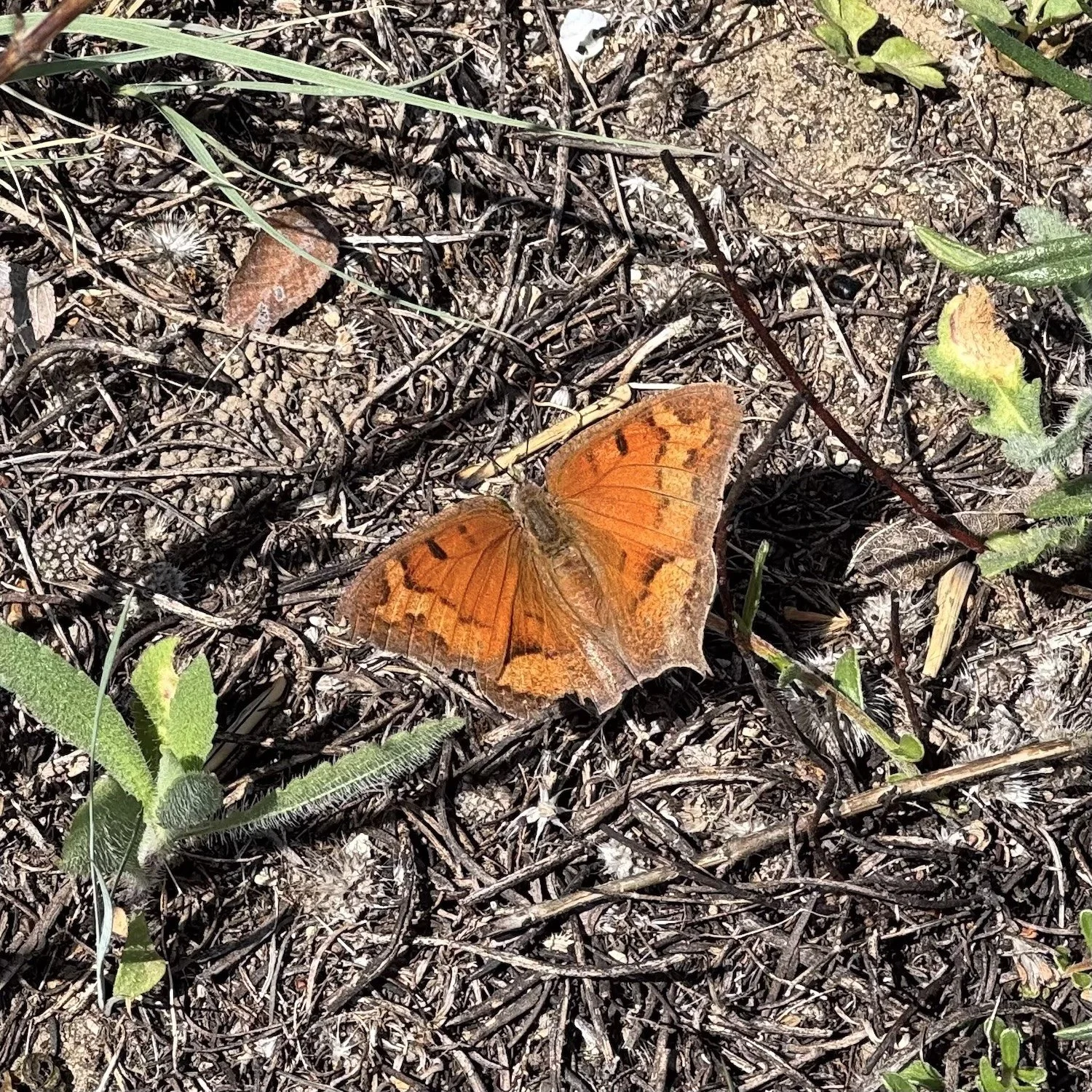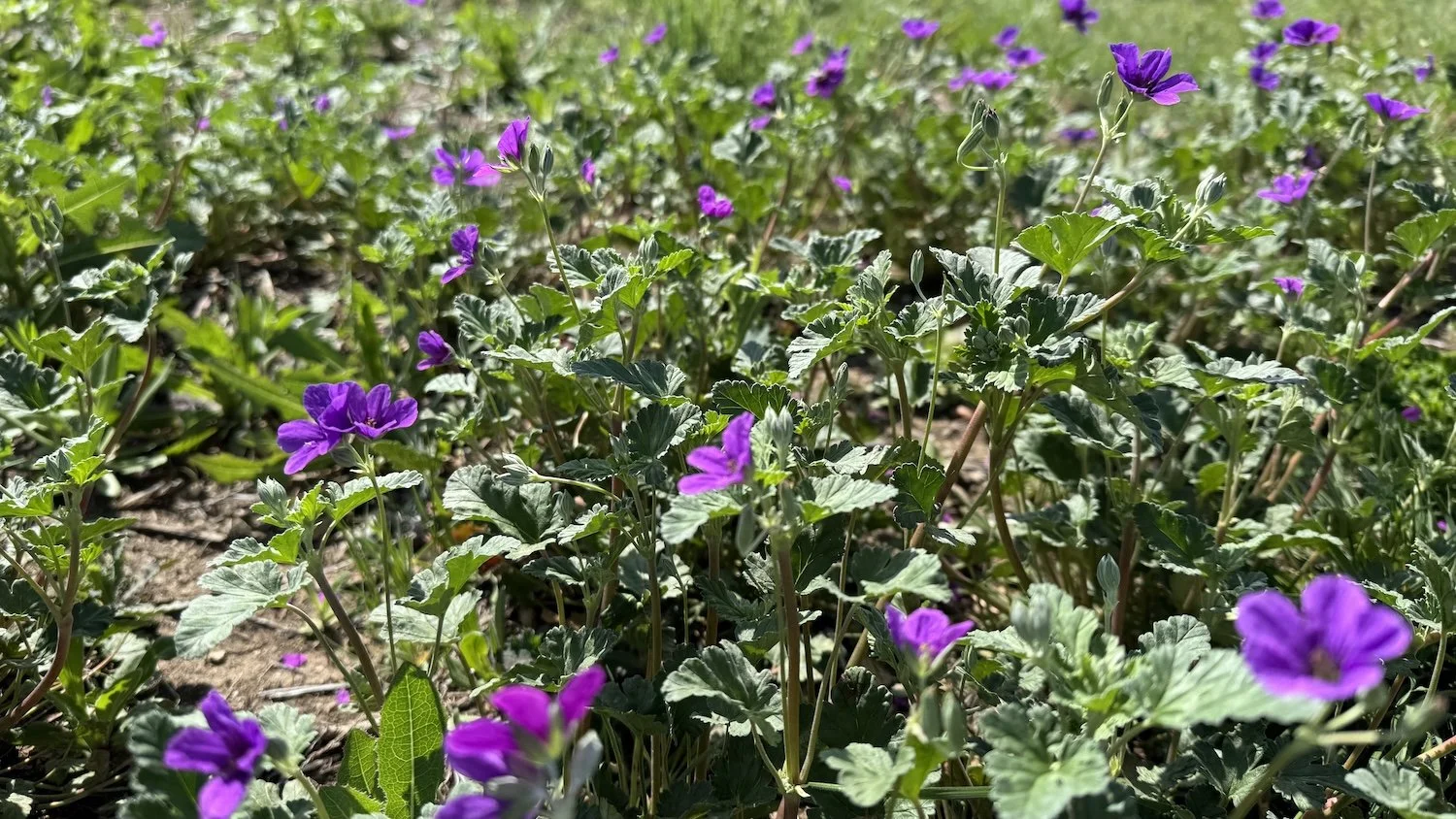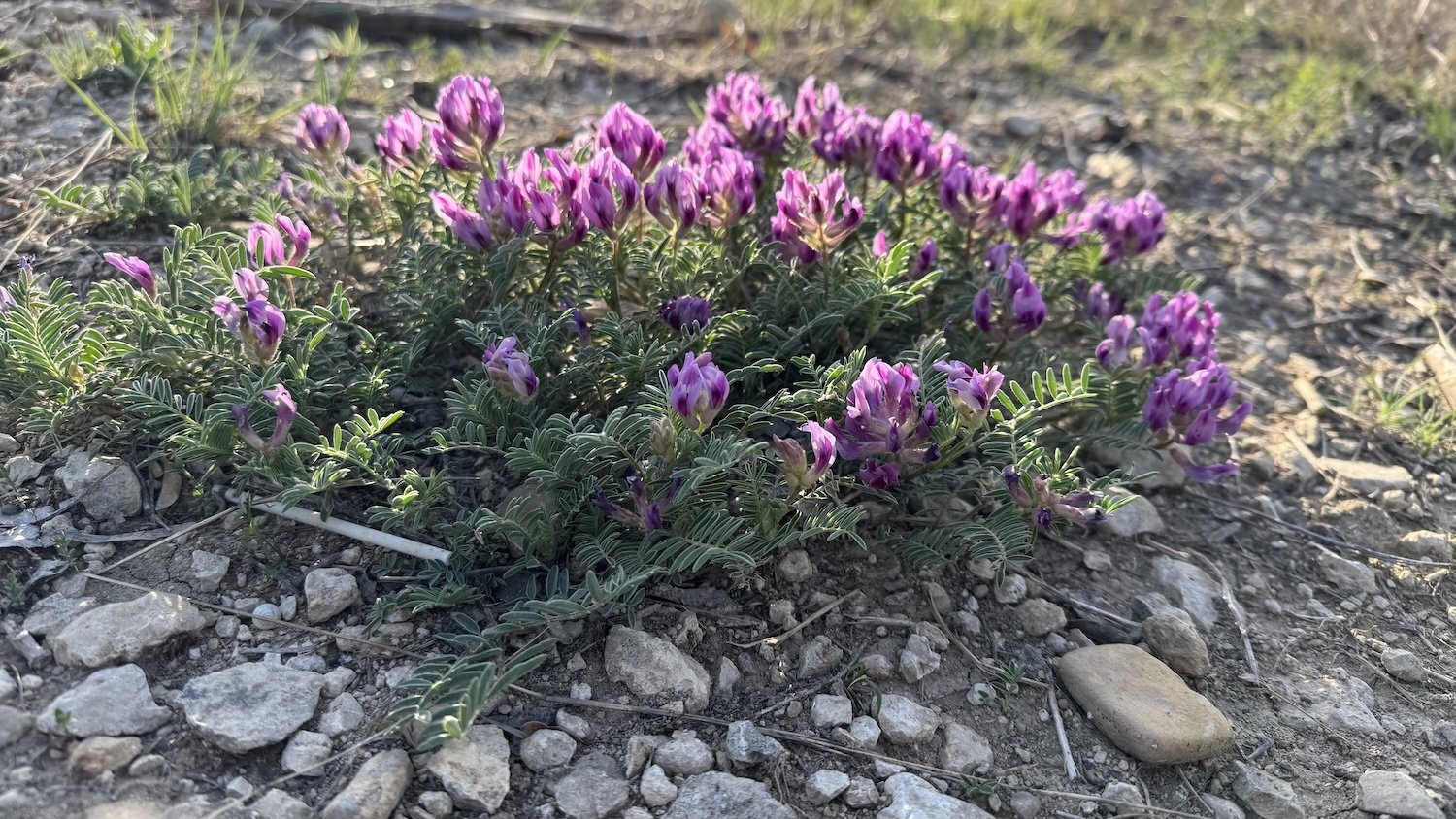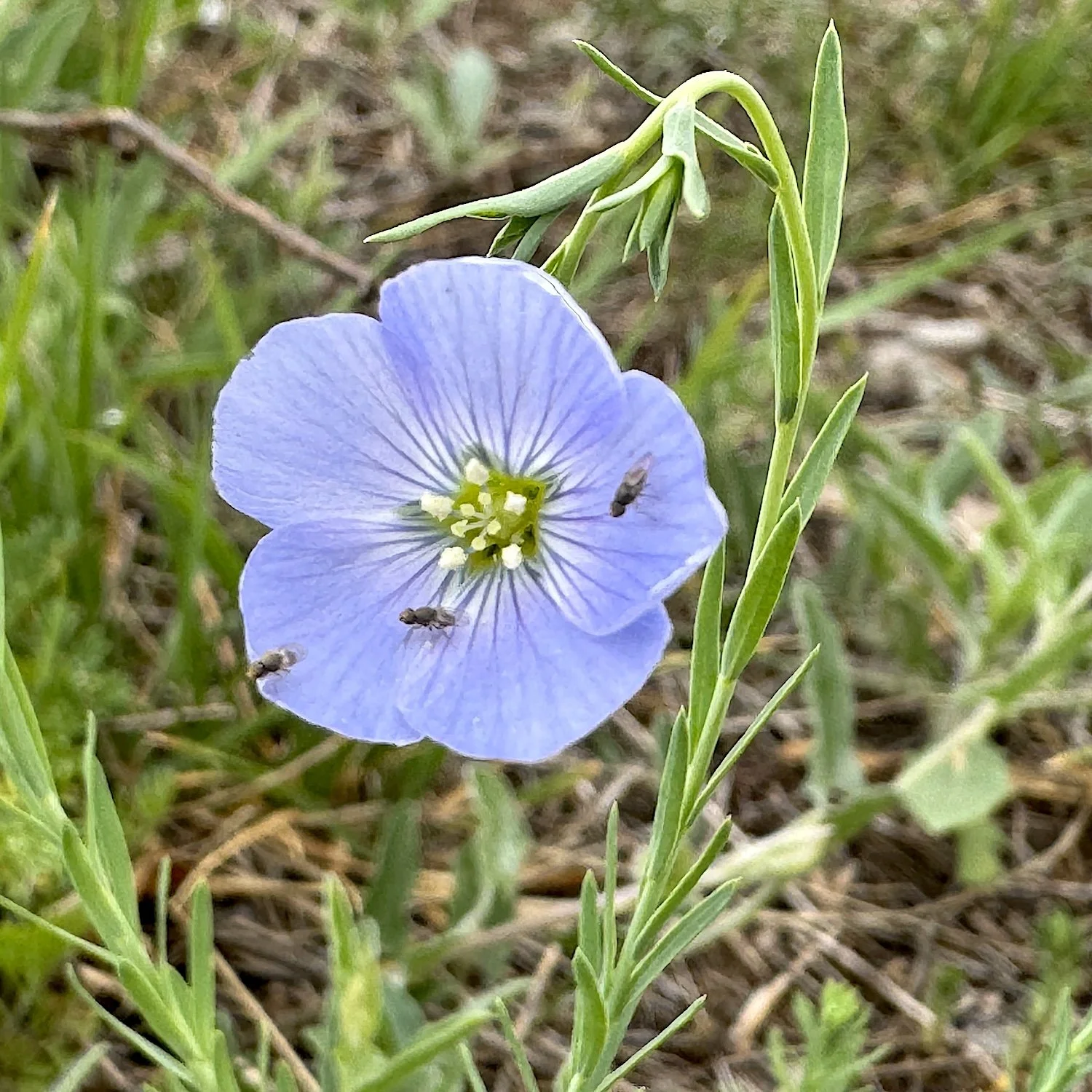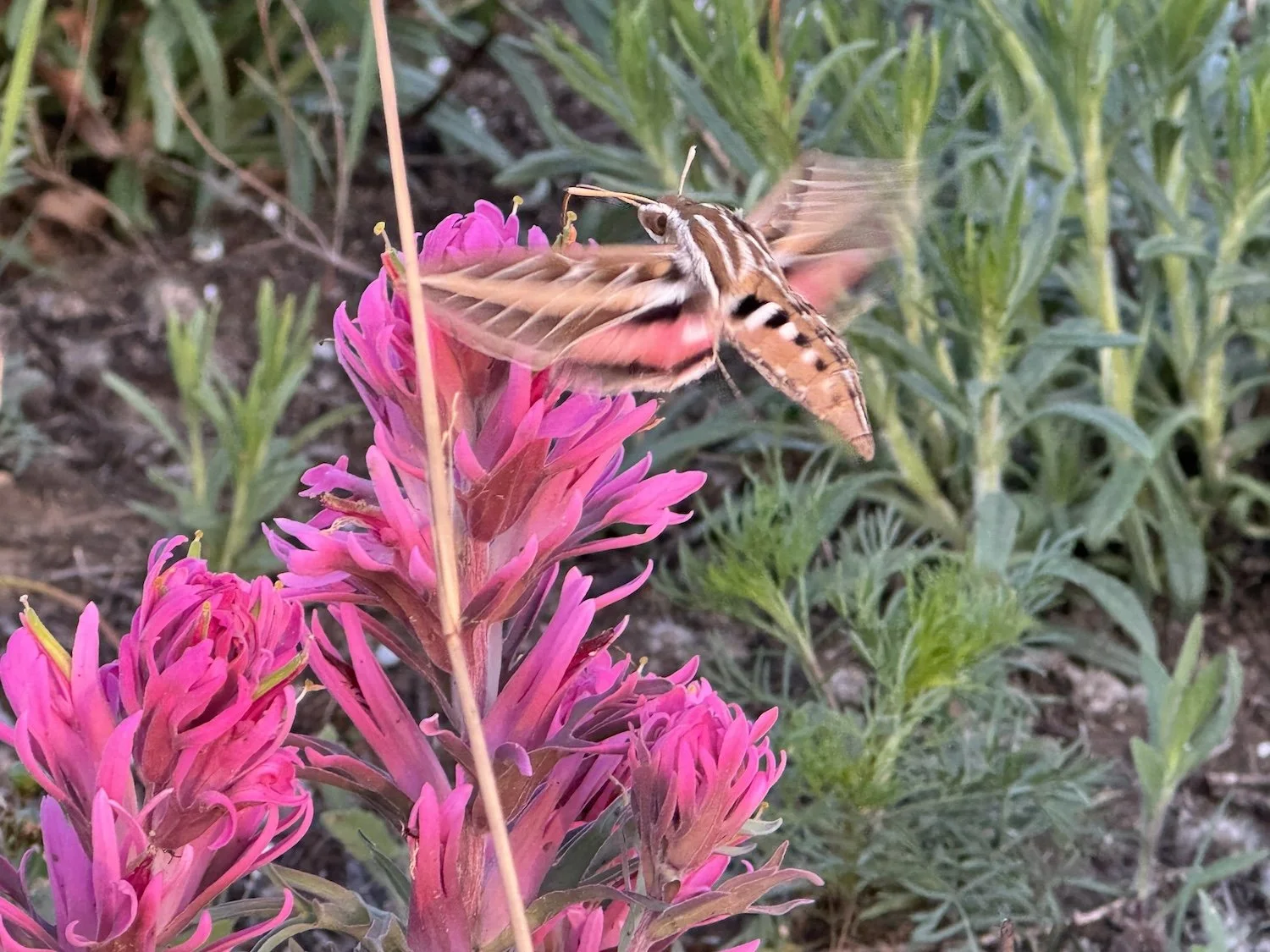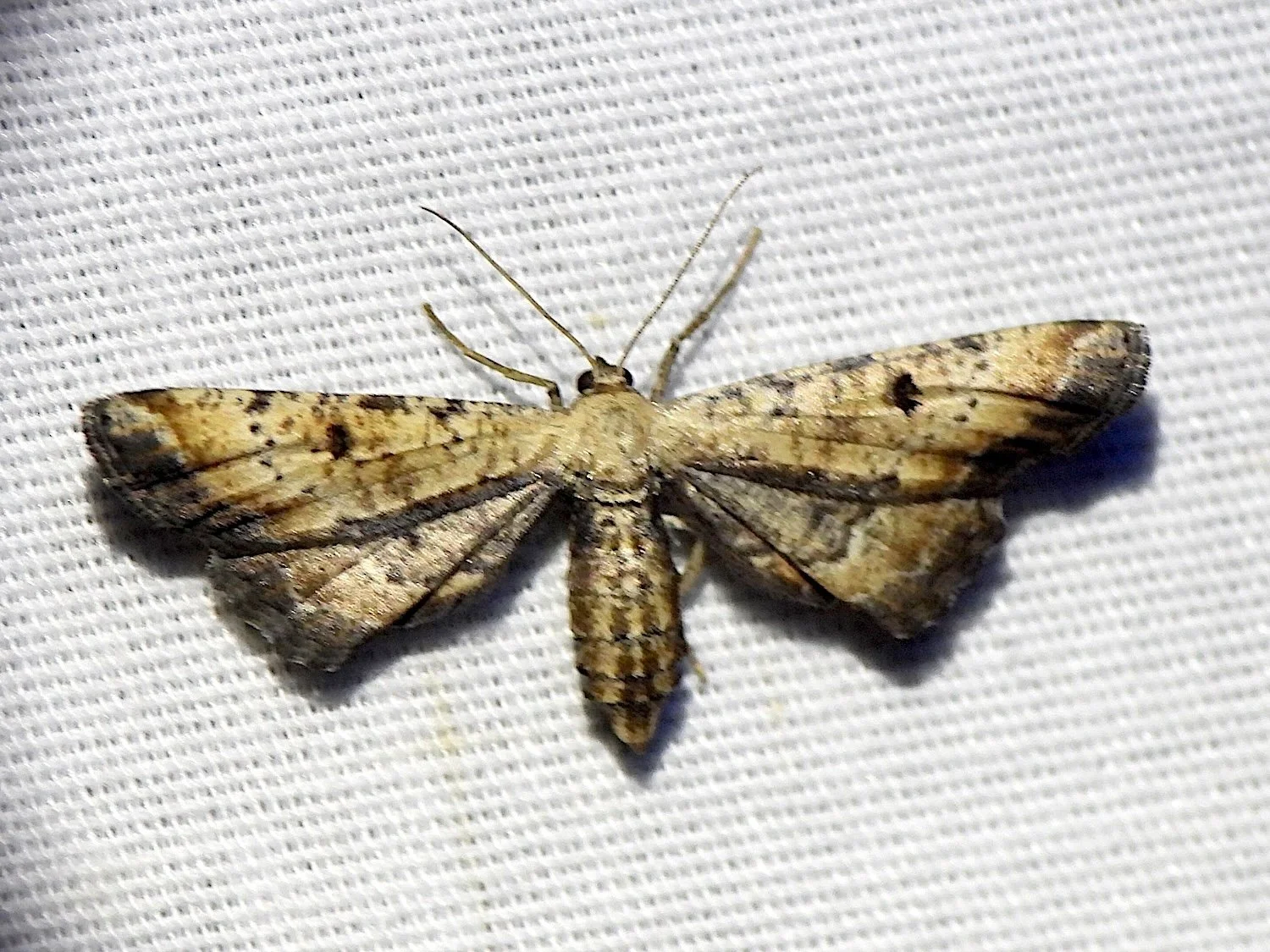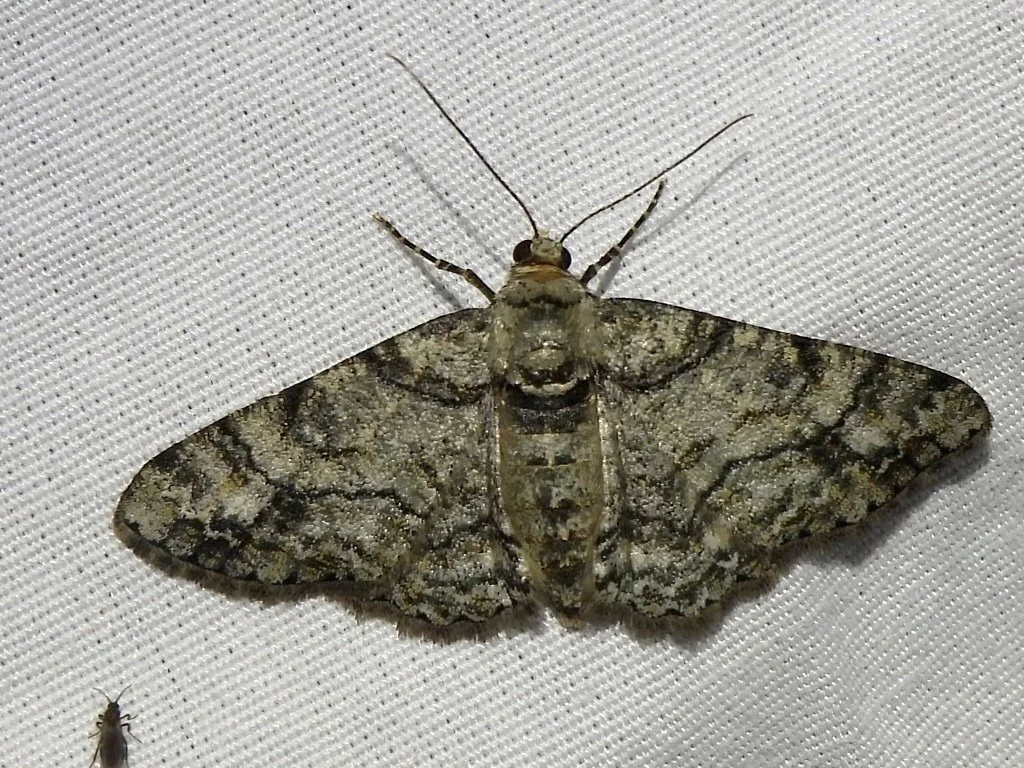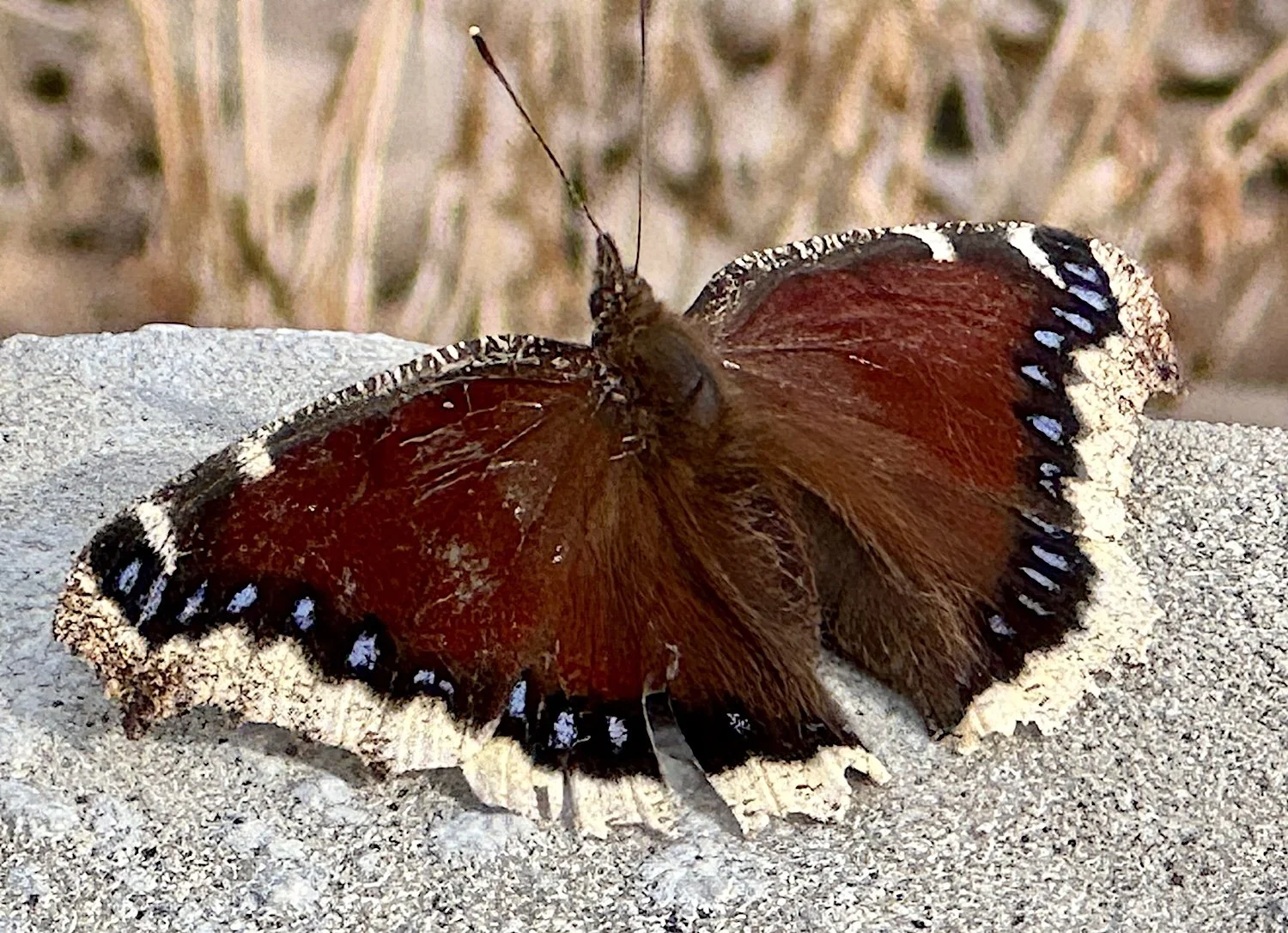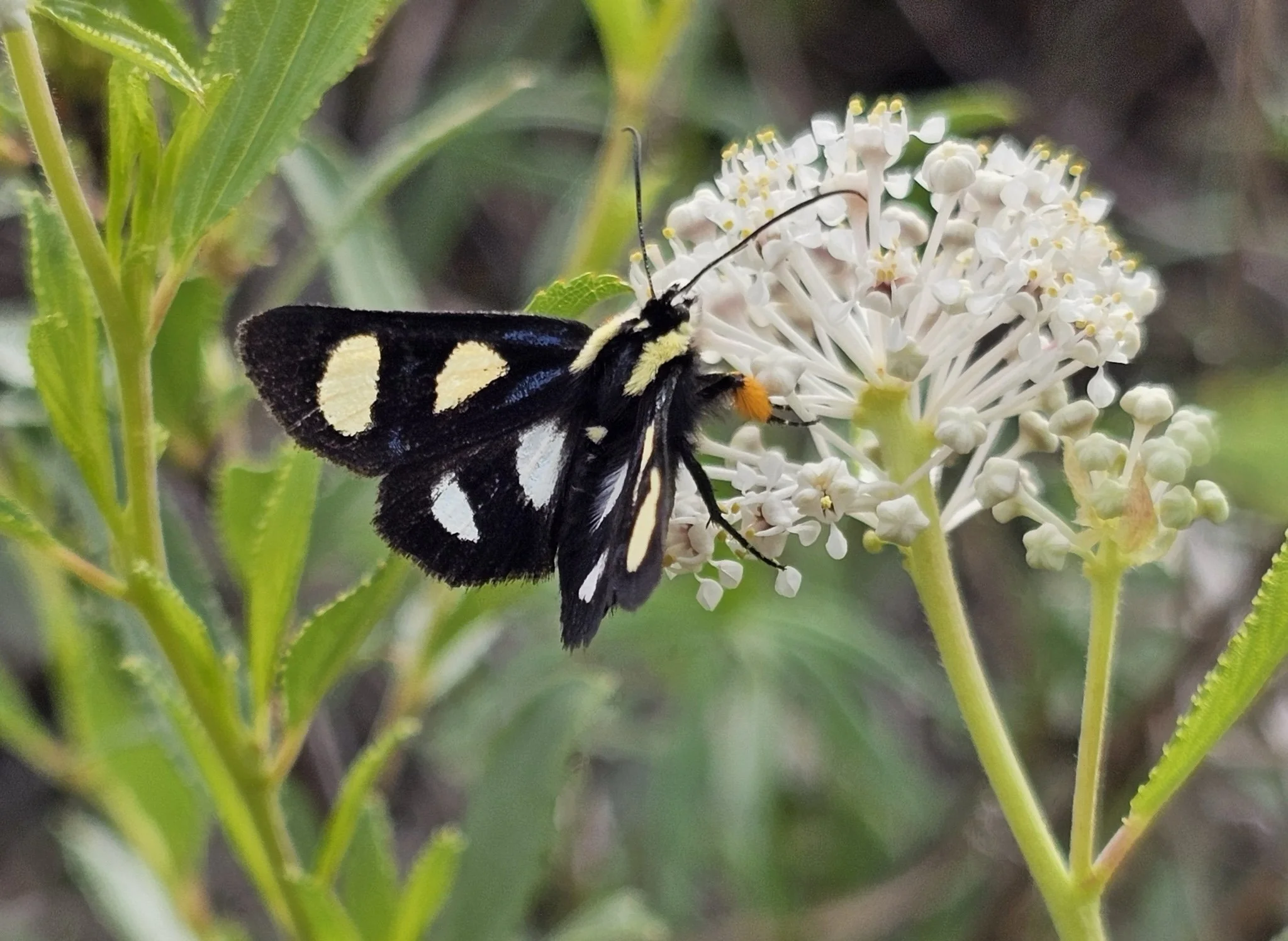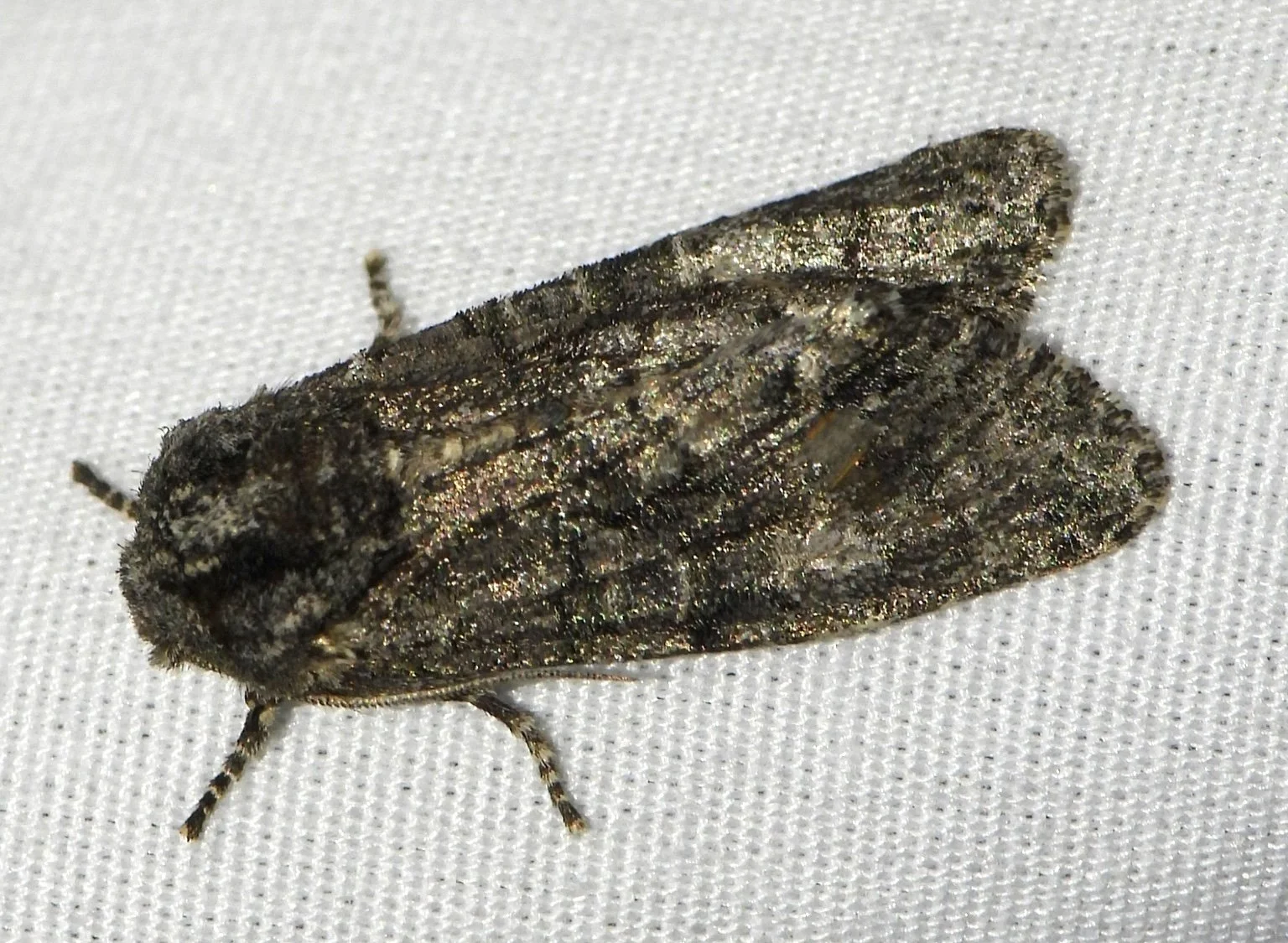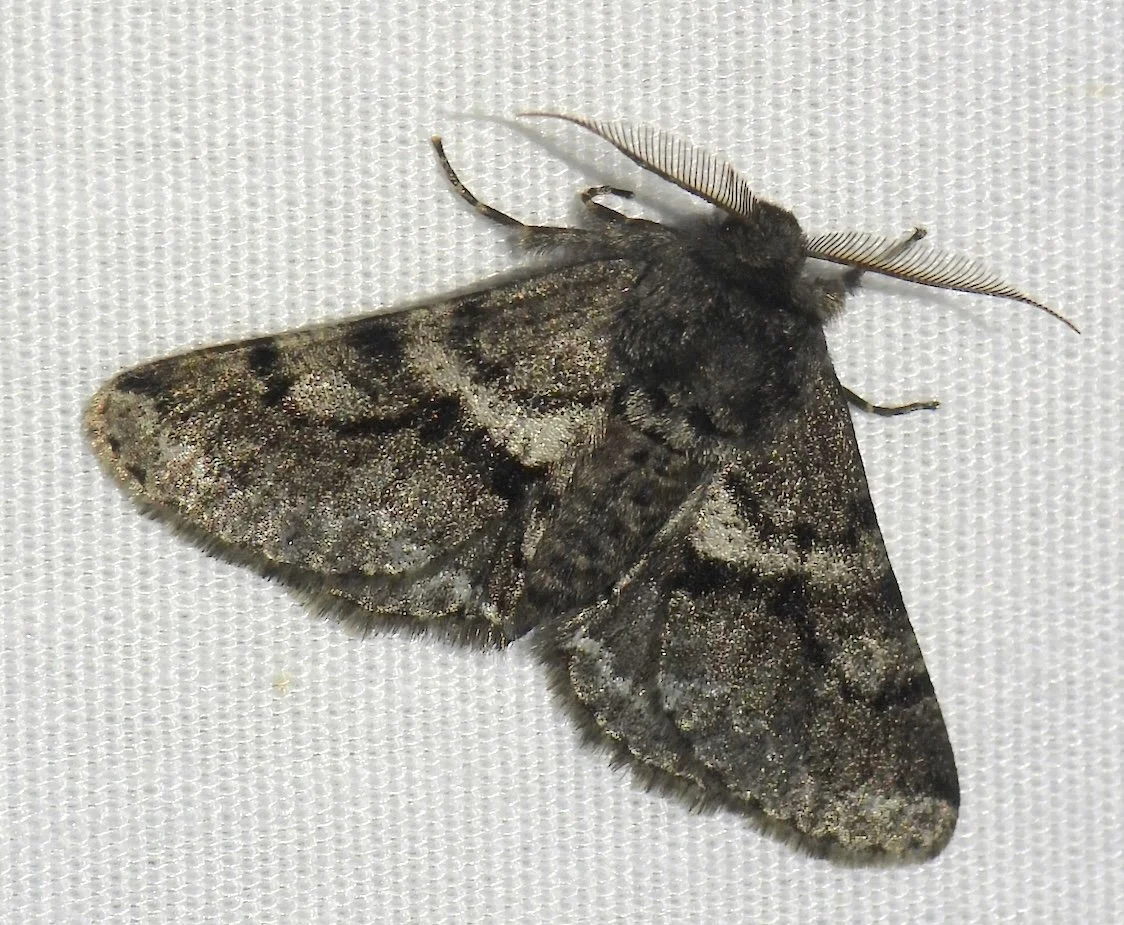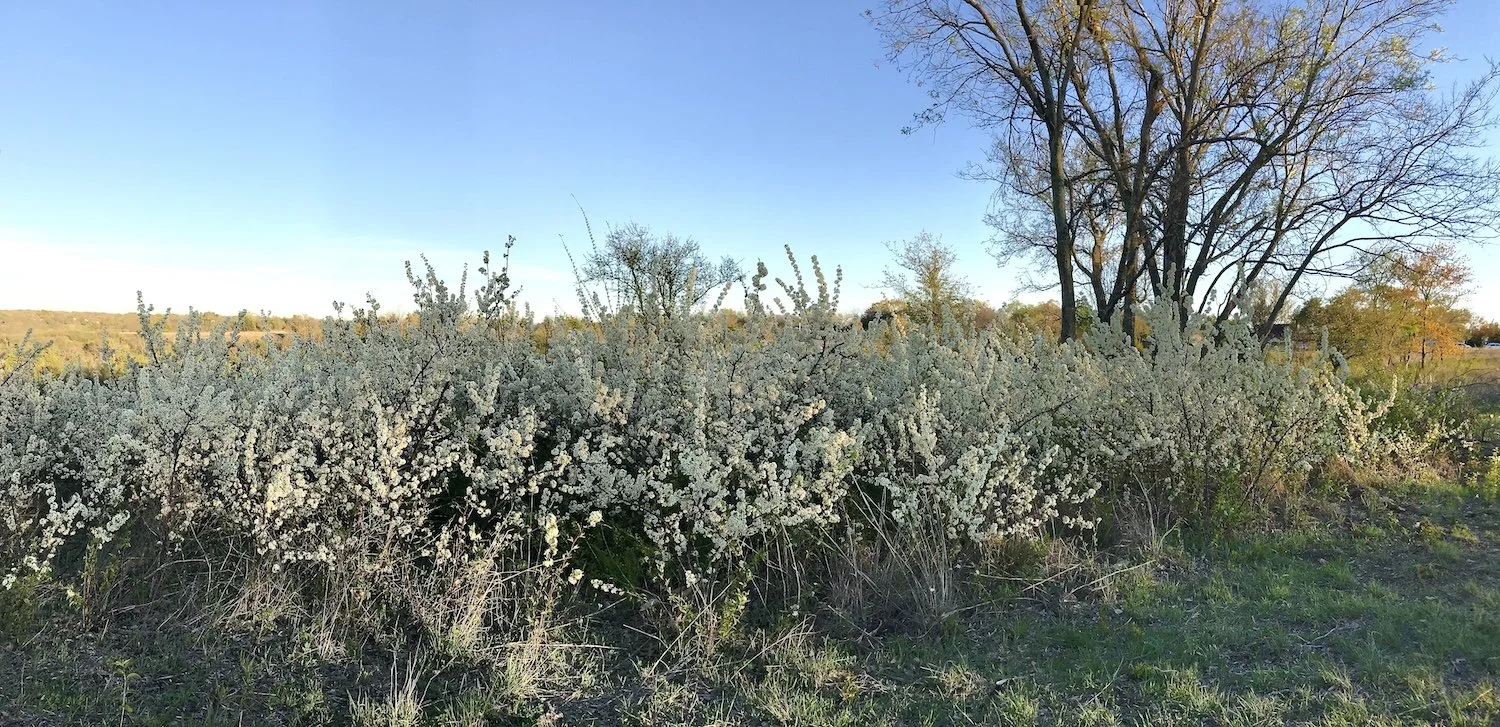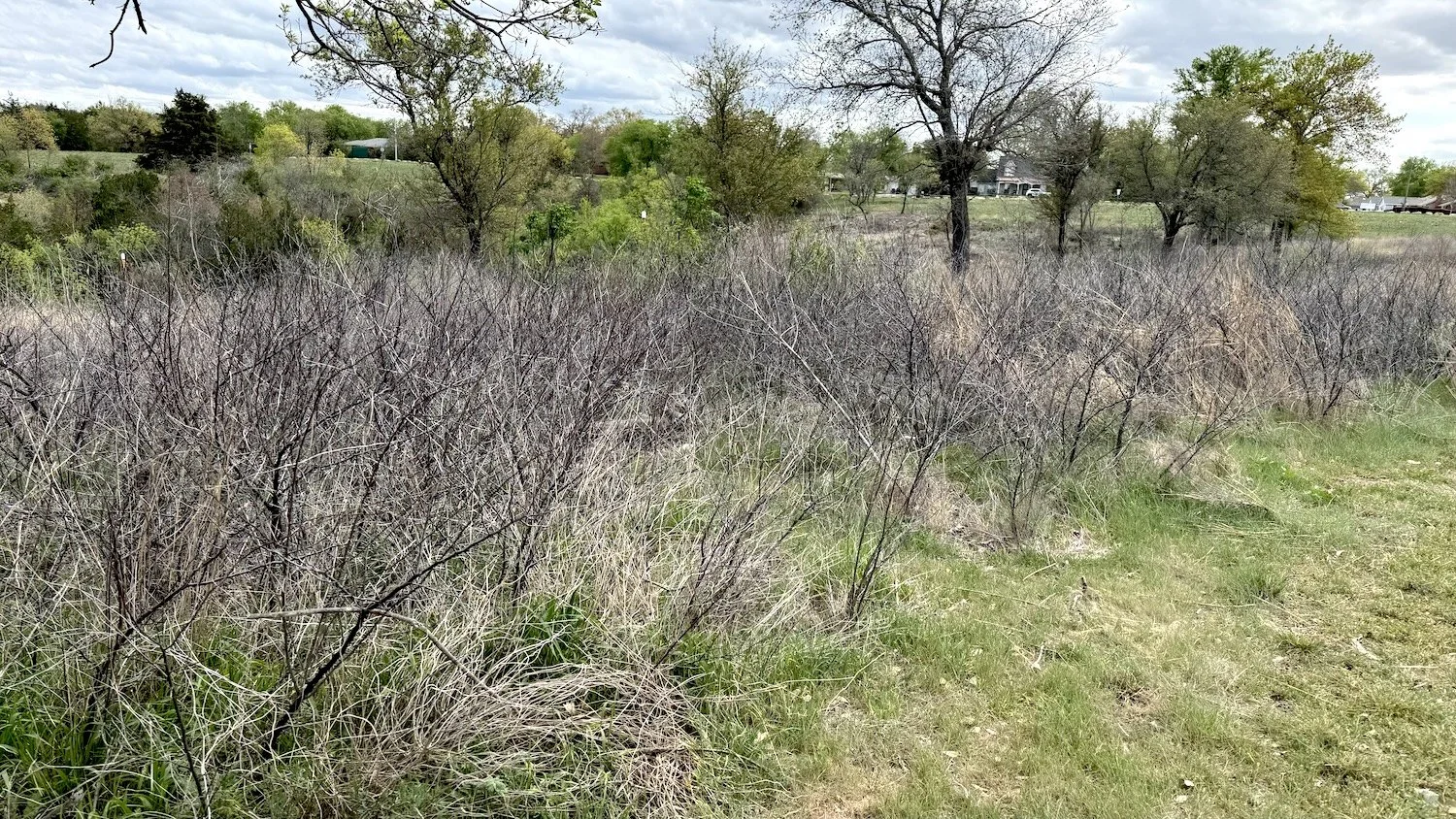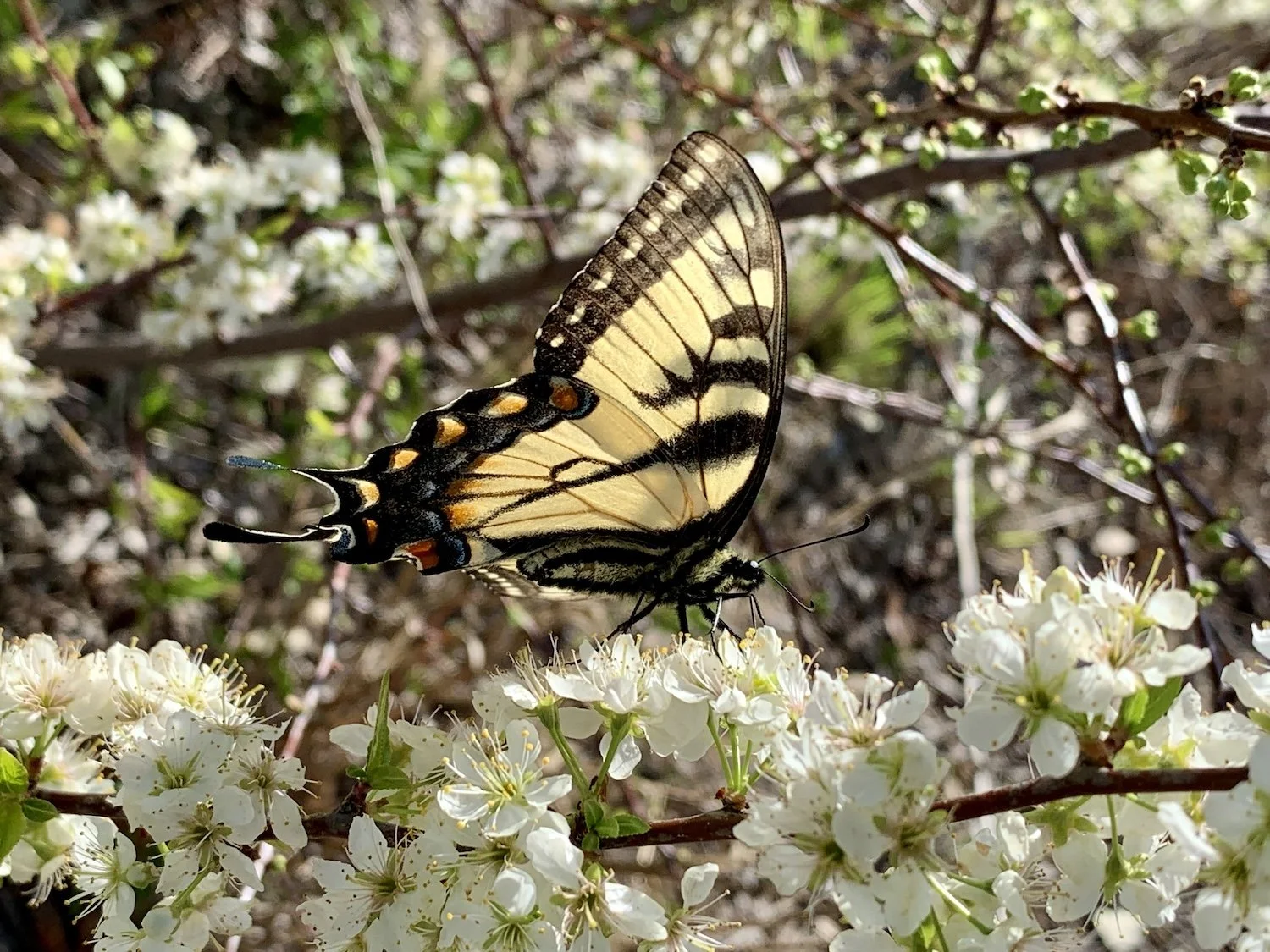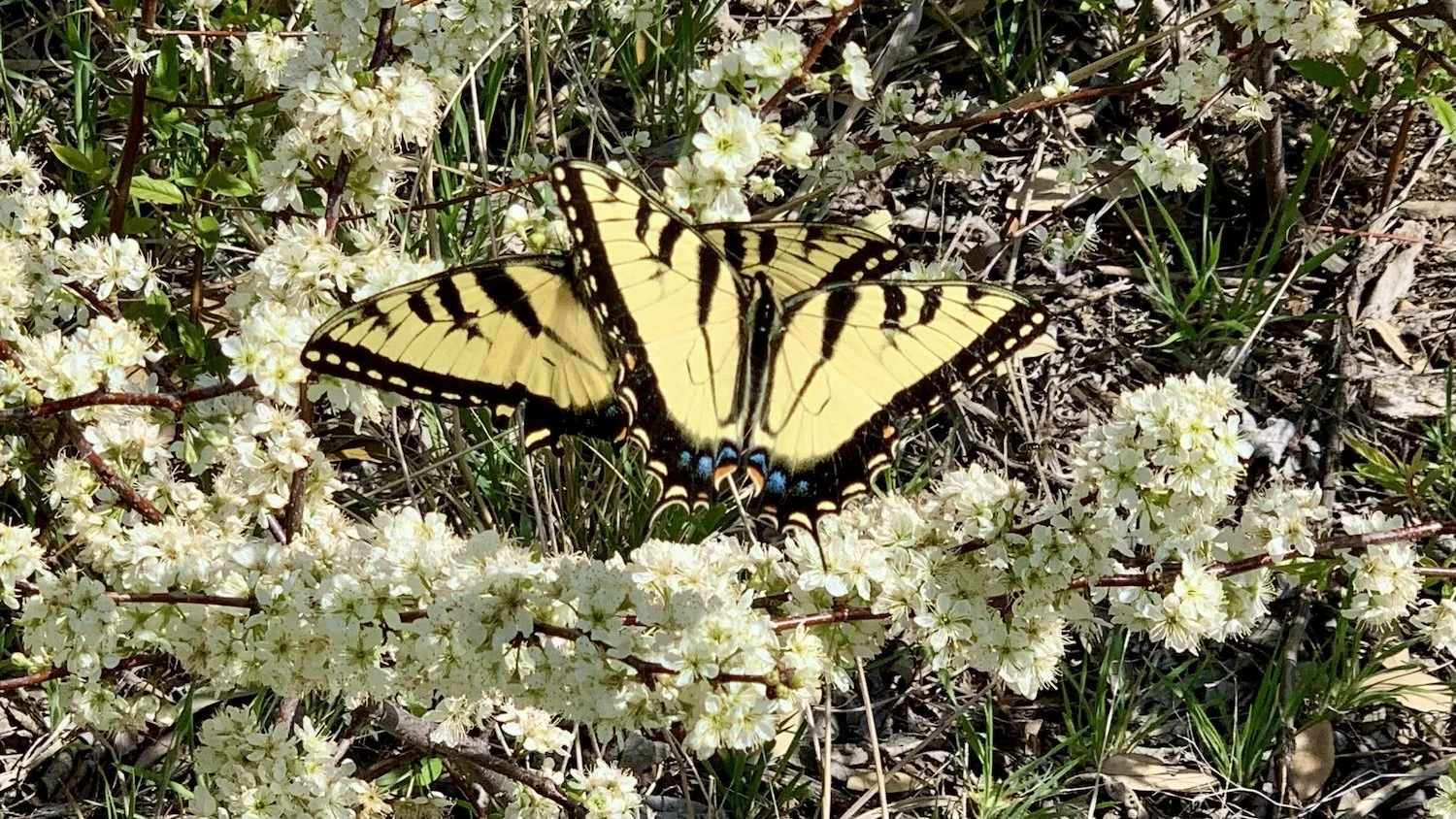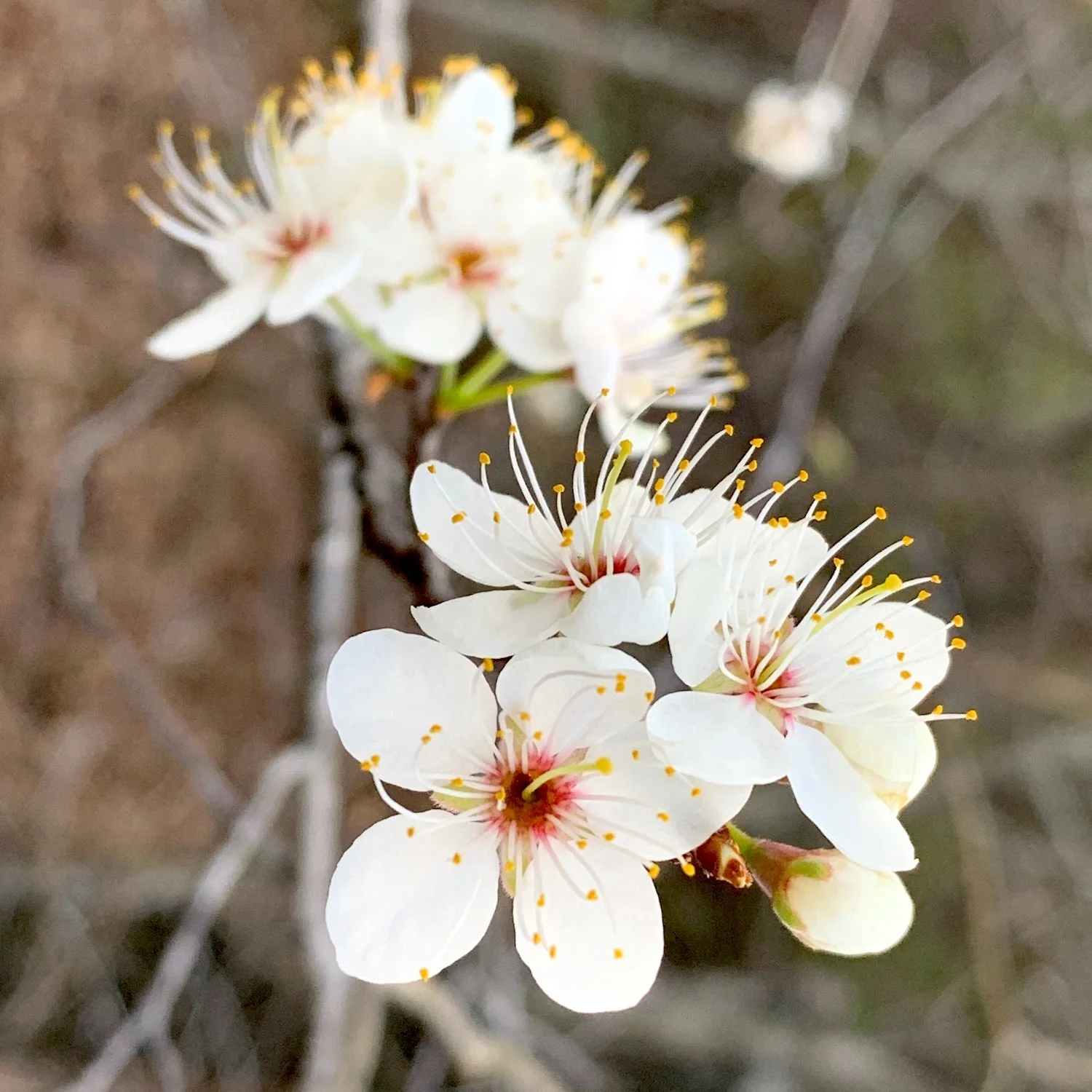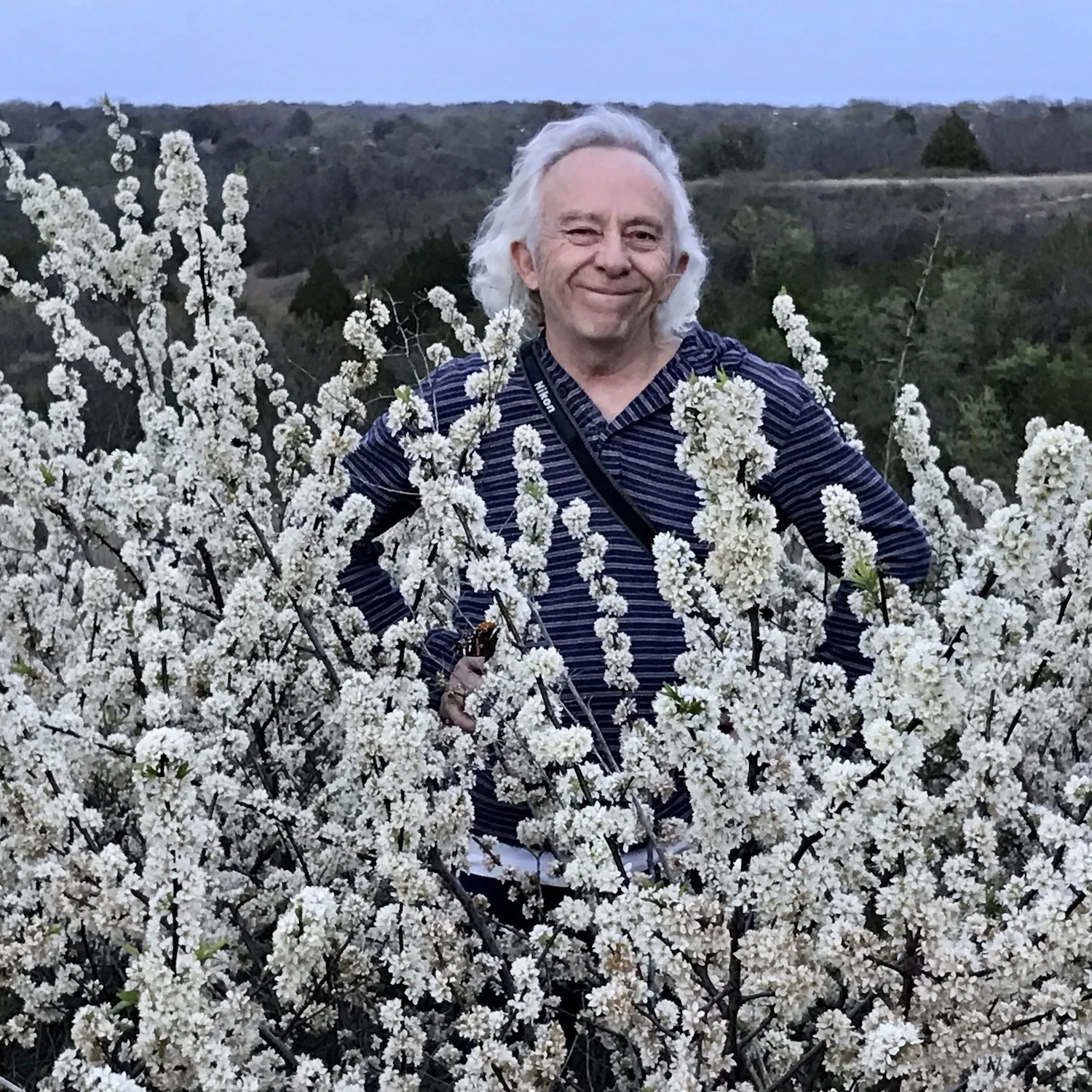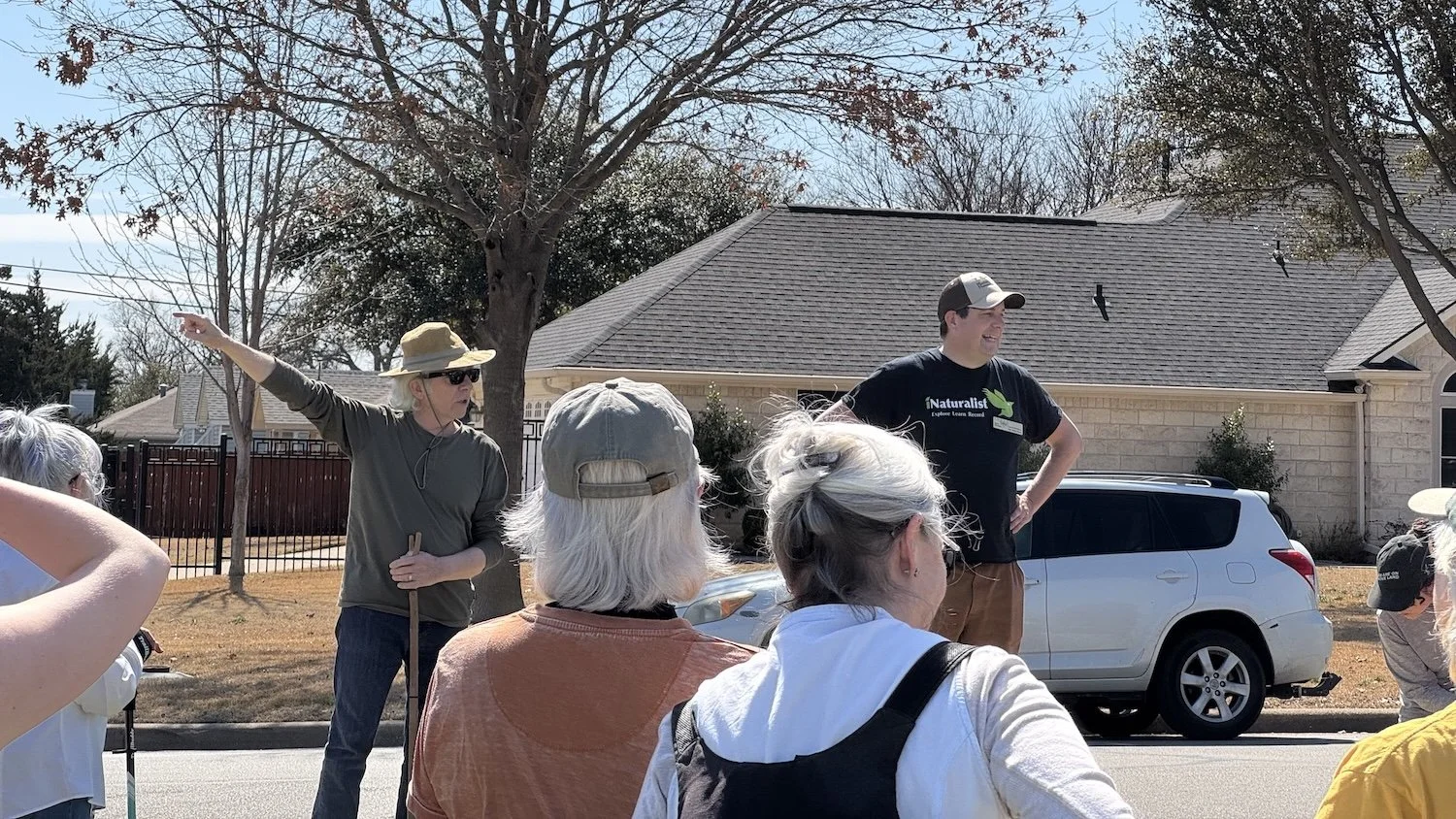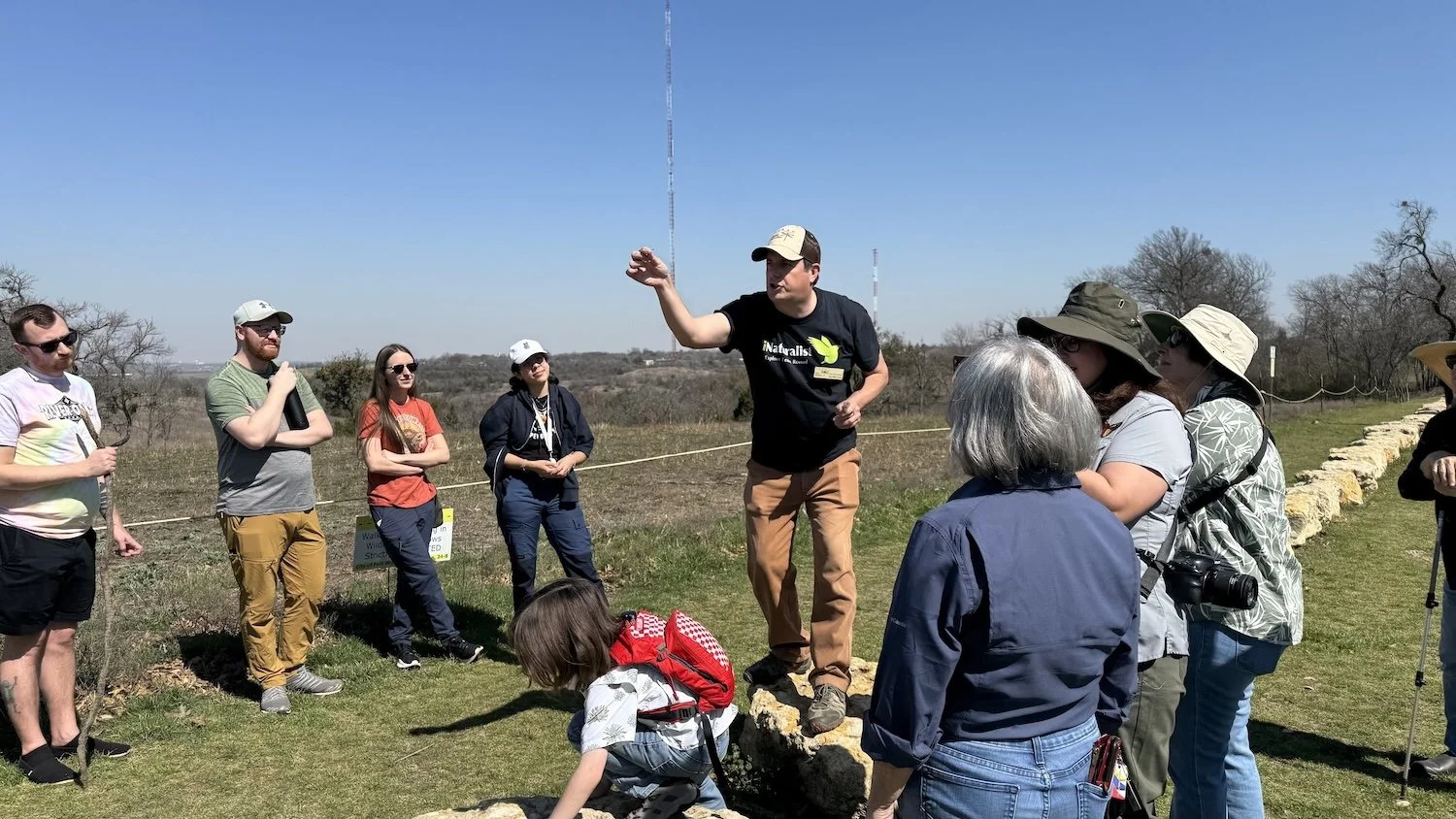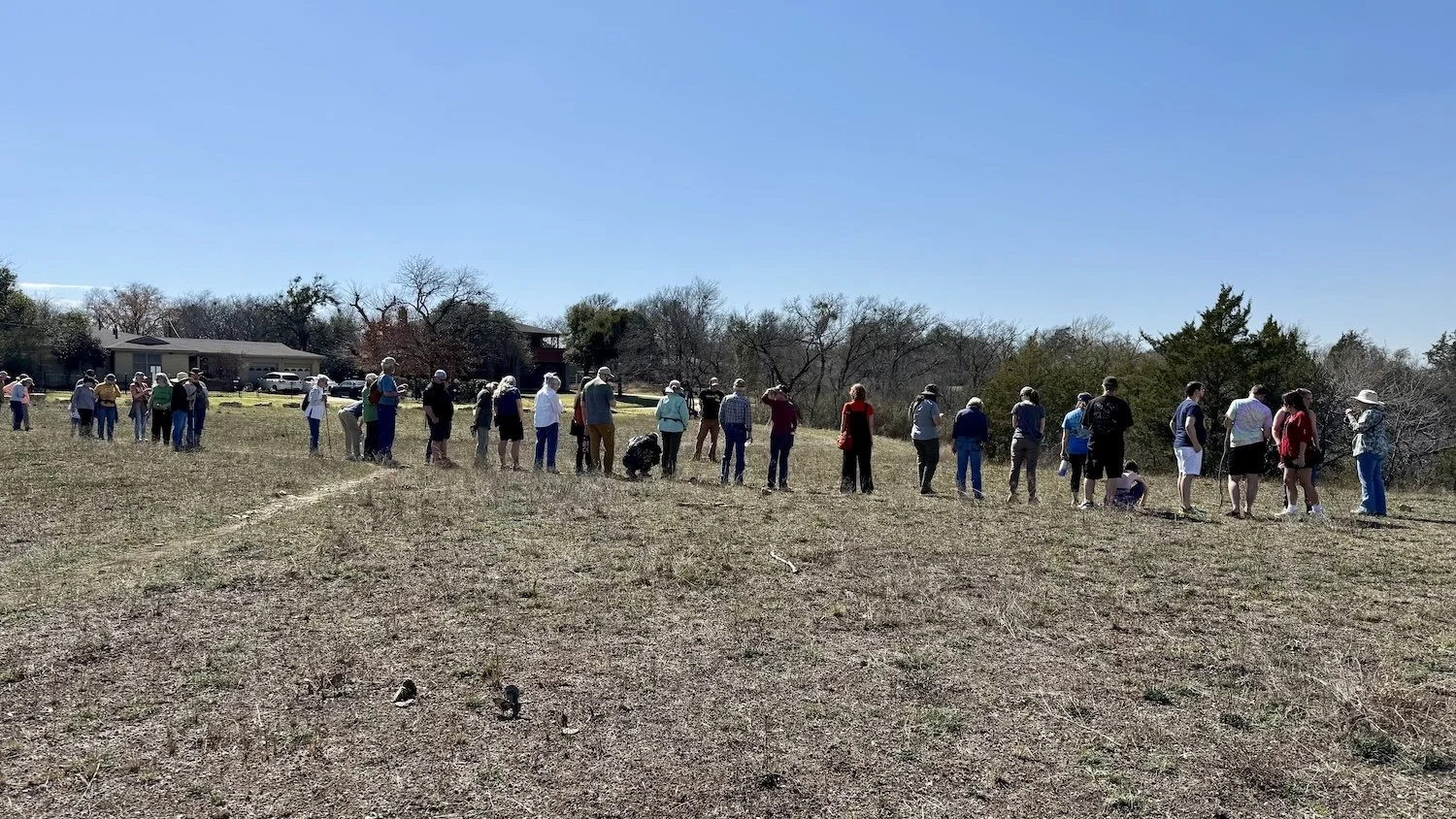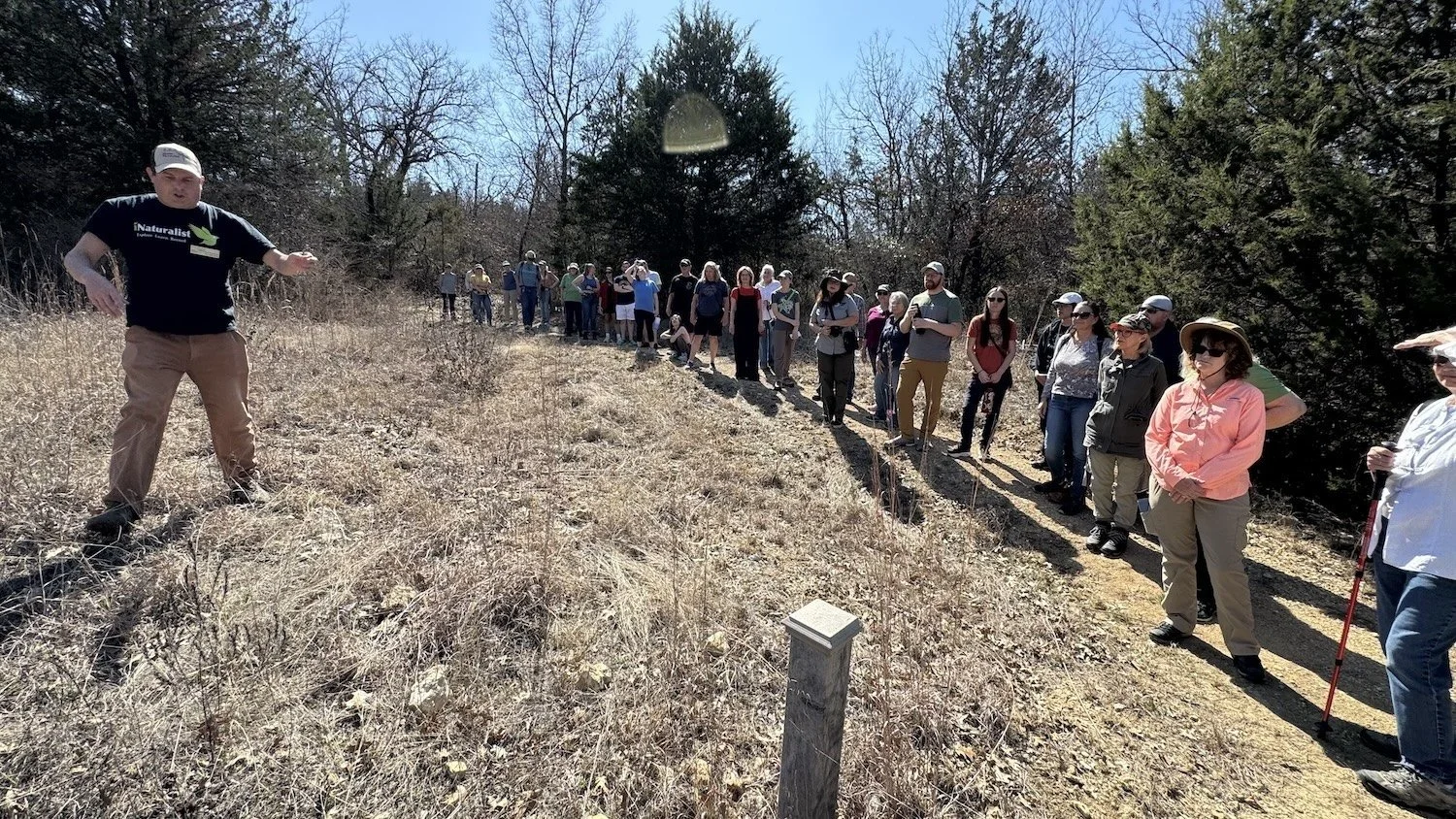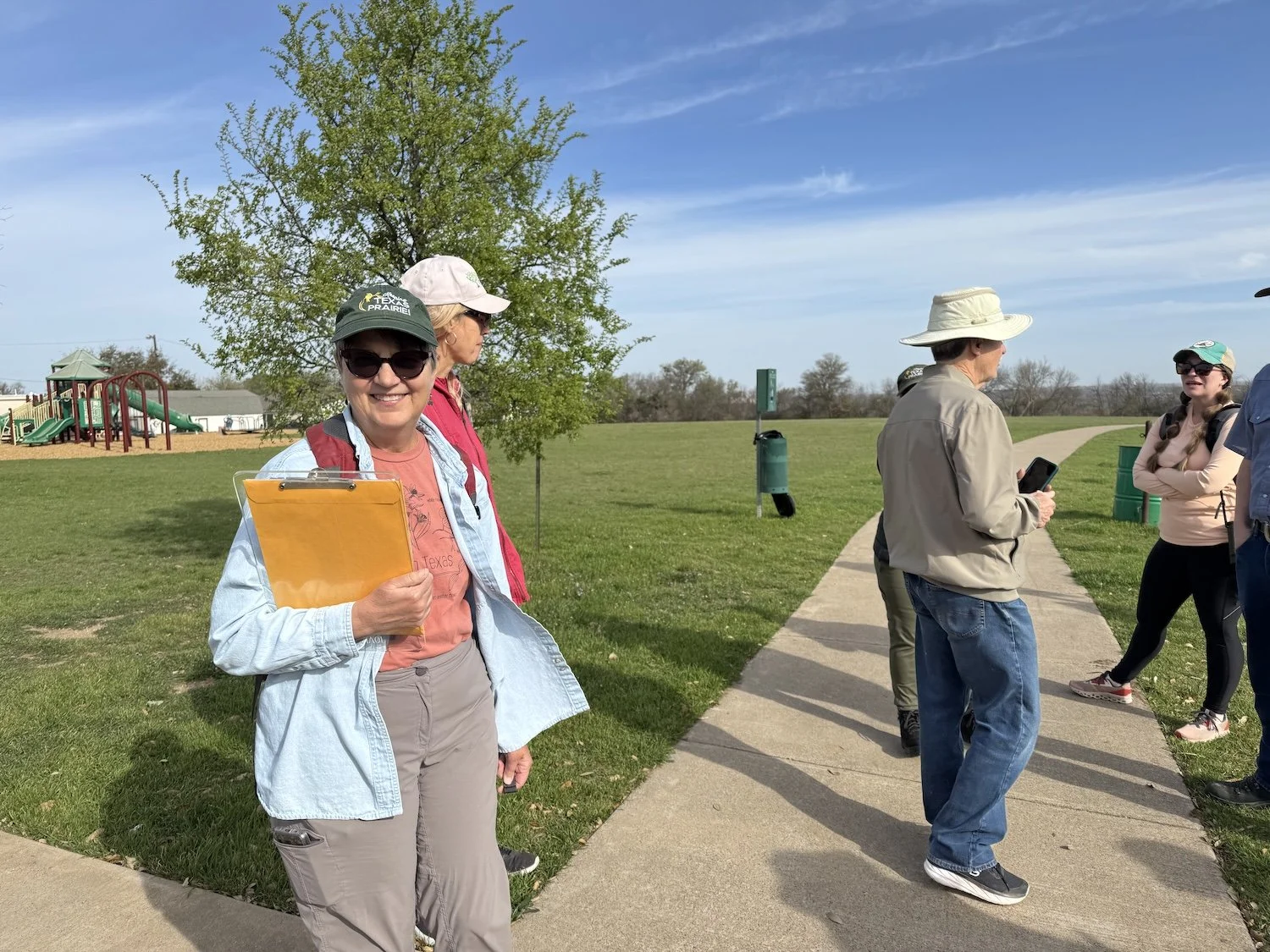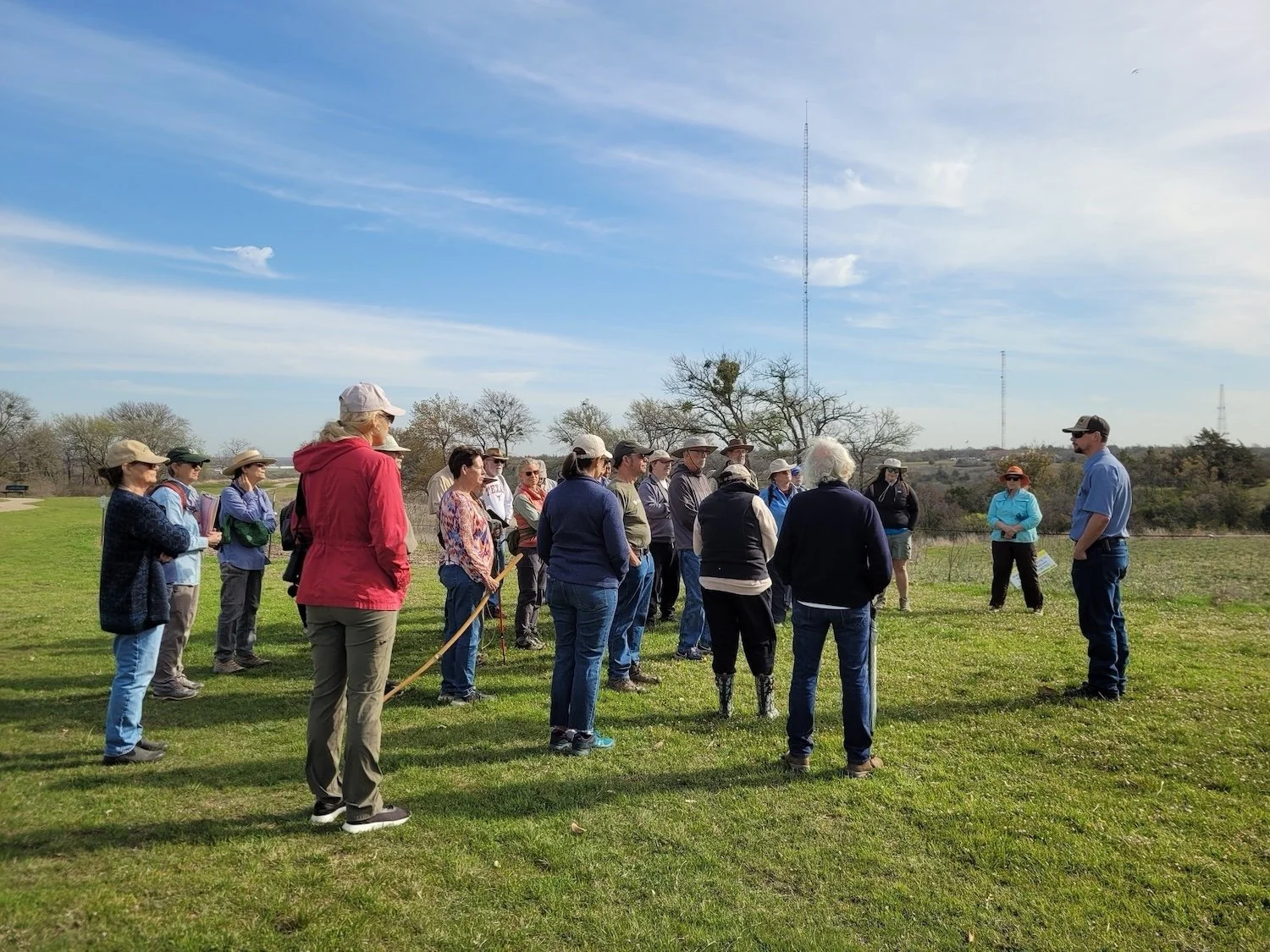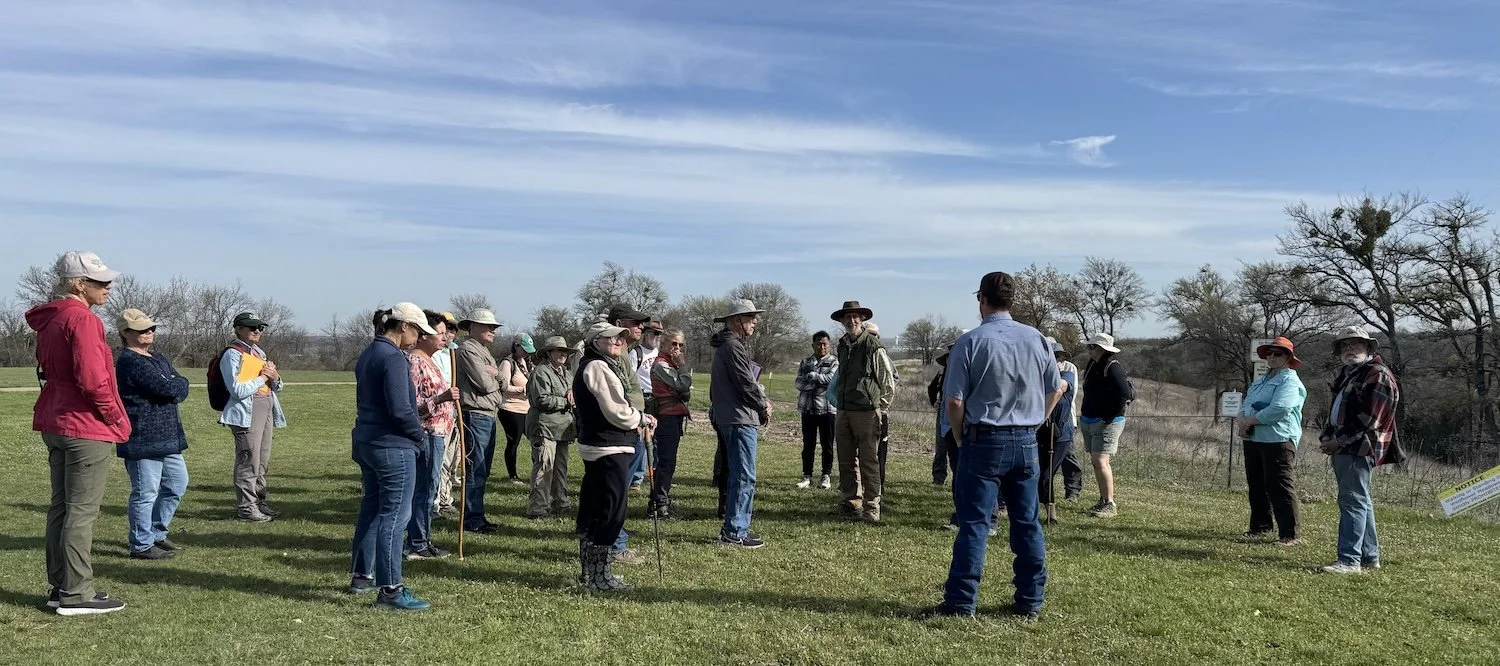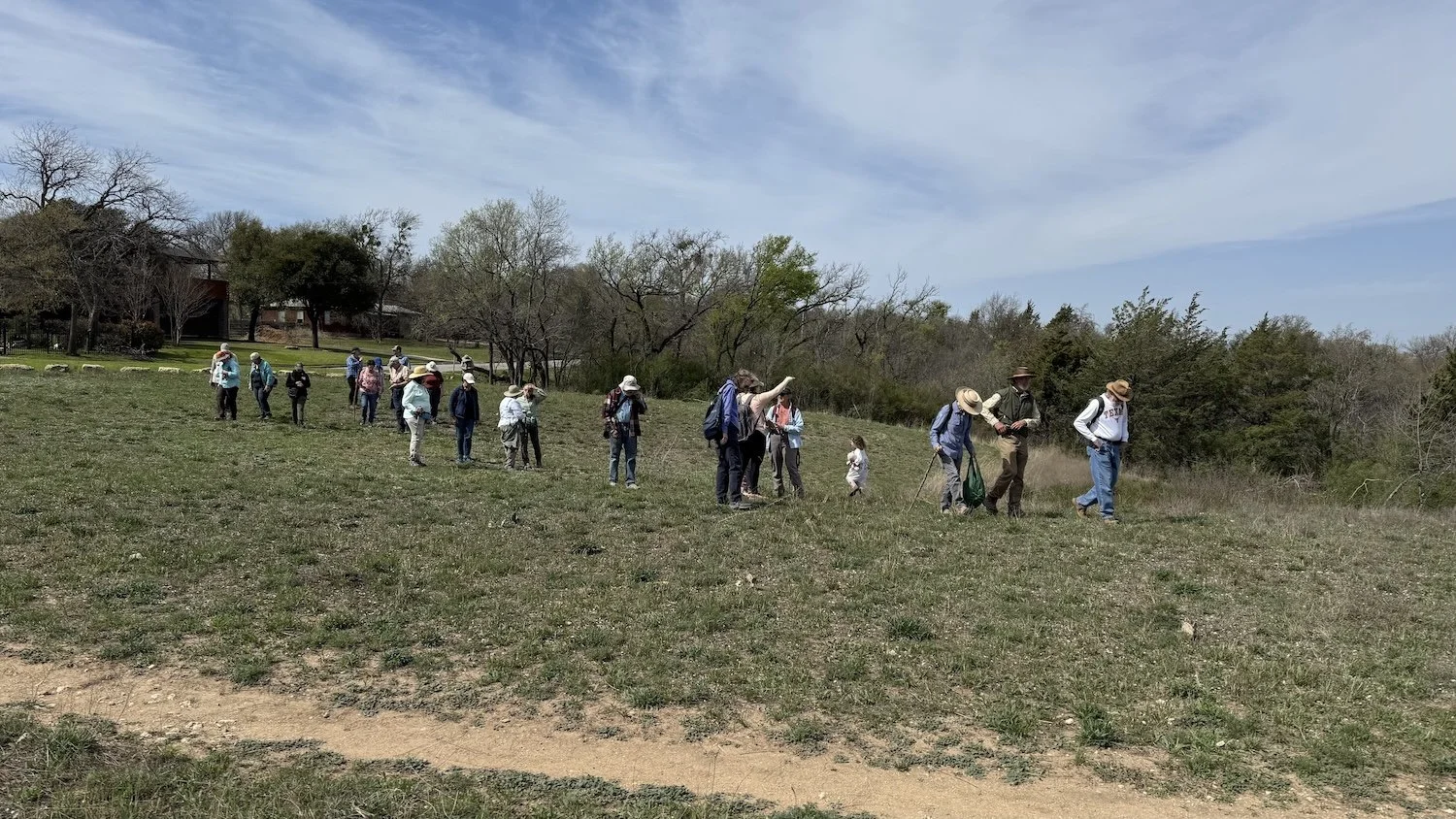Prairie Notes #220 - Mystical Meadow Mixes
Prairie Notes are monthly photo/journal observations from Tandy Hills Natural Area by Founder/Director, Don Young. They include field reports, flora and fauna sightings, and more, mixed with a scoop of dry humor and a bit of philosophy.
They are available free to all who get on the FOTHNA email list.
Mystical Meadow MIxes
Prairie Notes #220
March 1, 2025
1) Mystical Meadow Mixes
2) Field Report - March
3) New Species Report - March
4) Lament for a Creek Plum Thicket
5) Newsworthy & Noteworthy
6) PrairieSky / StarParty Report
7) Prairie Proverb - Osho
Engelmann’s Sage & Purple Paintbrush is the classic combination of wildflowers at Tandy Hills. This is a screenshot from a drone video in 2016 by, Chris Jenseth.
1) Mystical Meadow Mixes
With spring coming on fast, I have been dreaming of prairies full of dreamy wildflowers. Over the years, I have observed many intriguing combinations at Tandy Hills. There is something for everybody and something different every spring.
Our friends at Native American Seed have some nice seed mixes for sale. You should check them out if you are wanting to try and make your own prairie. Mother Nature does it best, however, and her best is often found at Tandy Hills.
With that in mind, I have come up with some of my own wildflower mixes based on observing Tandy Hills for more than 40 springs. Mine are not for sale but you can come see them carpet the meadows, for free, every April and May.
The classic mix, the most common I have observed, is what I call, The Iconic Meadow Mix. It joins, Engelmann’s Sage (salvia engelmannii)and Purple Paintbrush (Castilleja purpurea) in holy matrimony. The sage is one of the endemic species at Tandy Hills. Purple Paintbrush, is relatively uncommon everywhere, except at Tandy Hills. Together, they are a perfect match and usually bloom at the same time. Some years there is more or less of each but there is always some. Even the clouds sometimes mirror the wildflower colors.
Other memorable mixes include:
Lucky Charms Mix: Greenthread, Purple Paintbrush and Engelmann’s Sage. Downright gob-smacking and NO artificial dyes!
Christmas Mix: An uncommon combo of Prairie Bishop and Indian Blanket.
Beethoven’s 9th Mix: That is, a full orchestra and chorus of wildflower species, all blooming at once, typically in late spring. It elicits a hearty “bravo” and a standing ovation to lucky observers.
Scottish Tartan Mix: Another uncommon mix of Greenthread and Skullcap.
These various combinations are one big reason I call the east end meadow, THE Iconic Meadow.
Will the “classic” meadow return this year? We shall soon know the answer. After a few walks on the burned prairie in March, it appears that most of these wildflowers are going to have a great year, including the classic mix. I’m holding on to my hopes. The big rain we got on March 30, with more coming in early April, will help a lot.
> CLICK on each image below to see it un-cropped and with captions.
> Thanks for reading Prairie Notes and supporting Friends of Tandy Hills Natural Area. Your donations are welcome HERE.
DY
Other memorable mixes include: Lucky Charms mix; Christmas mix; Scottish Tartan mix; Beethoven’s 9th mix;
2) Field Report - March
Only 3 months after the prescribed fire last December, the View Street meadows are rising like a Phoenix. Nearly all the species of prairie flora we expect to see here have been observed. It’s speeding up each day. As hoped, we are seeing more diversity than is recent years. Other sections of the natural area are also coming back to life. All the bright colors and spring green are starting to appear across the hills. The big rain storm on 3/30 helped a lot.
In other news, This years “super-bloom” is Crowpoison which carpeted the west meadow. The Cross Timers Master Naturalists team of Cindy Paquette, Dana Austin, Fonda Fox, Suzanne Tuttle and Robbie Crawford volunteered for a trash sweep in late March. later in the March a crew of volunteers from Bell Helicopter spent 2 hours cleaning up trash as part of the Cowtown Great American Cleanup. They hauled out 28 big bags. Finally, we had a sweet visit from our two Interns from last summer.
And yes, we do have Bluebonnets but they are hard to find. A small-ish colony exists on Broadcast Hill next to the old radio station building.
The Iconic Meadow: Before and after the prescribed fire. December 27, 2024 (l) March 27, 2025 (r)
Cedar Fever of a different kind. A large flock of Cedar Waxwings followed me home from Tandy Hills. They are one of the best-dressed birds and have a voracious appetite.
3) New Species - March
Just like daylight savings time, the species count took a leap forward in March. There were 25 new species found, thanks mostly to a night of moth-ing by Sam Kieschnick. One especially notable new species, was a, Mourning Cloak Butterfly. First observed in early March, it followed me home (just across from Tandy Hills) and was still here as of March 30th.
See all 2,293 species at the Tandy Hills iNat Project Page HERE.
4) Lament for a Creek PLum Thicket
One of spring’s most anticipated events at Tandy Hills is the blooming of the famous Creek Plum. Their magnificent blooms are super-attractive to insects of all kinds. The aroma is overwhelming.
Creek Plum (Prunus rivularis) was actually the first thing I posted on iNaturalist back in 2010. It is a touchstone species for me and one of the reasons I have fought so hard to protect Tandy Hills. I first mentioned it in Prairie Notes #17 in 2008. In Prairie Notes #44, I wrote about making a Creek Plum pie. And, finally, I wrote in depth about the wonders of Creek Plum in Prairie Notes #185 in 2022.
Now, I’m writing it’s obituary.
Sadly, the thicket has suffered a near-total die-back this year. The cause is unknown but I suspect herbicide. Perhaps an error by someone who didn’t realize what it was. Who knows. Only two or three of plants survived and started blooming last week. It’s a sad display compared to their usual breathtaking appearance. This comes after the thicket was accidentally mowed to the ground in 2020 but had fully recovered. I am crestfallen.
The problem with this uncommon plant it that, if you don’t see it blooming you might think it’s just a shruby weed to get rid of. I thought it would be safe at Tandy Hills but I was mistaken.
5) Newsworthy & Noteworthy
>>>>>>> Author and naturalist, Amy Martin, is featured in the Spring edition of, Edible Dallas/Fort Worth. There are two beautiful double-page spreads, based around a short interview and an excerpt from the Trinity River Audubon Center chapter of Wild DFW.
You can read it for free right HERE or grab a free hard copy at many local grocers.
>>>>>>> A nice crowd of about 50 people showed up for the 17th annual, Trout Lily Walk w/Sam Kieschnick. Walking at the “speed of botany”, Sam shared all kinds of information and observations. Everyone got a photo of the Lovely Lilliputian Lilies. Thank you Sam K!
>>>>>>> About 35 people attended the post-burn walk/talk at Tandy Hills on March 18th. Jeff Quayle, Suzanne Tuttle, Kate Morgan, Jared Hall and Michelle Villafranca led the walk organized by Native Prairies Assoc. of Texas-Fort Worth. Famous KXAS-TV weatherman, David Finfrock, was in attendance.
6) Prairie Sky / Star Party report
The star part was rained out in March. That’s always a possibility in the spring. The next star party is April 5th. See the full schedule on the website HERE. Come out and see the night sky and visit with members of the Fort Worth Astronomical Society (FWAS). 2025 will be their 10th straight year at Tandy Hills.
Here is the sky-watching commentary for April from FWAS rep, John McCrea:
“For our April star party, we will have our familiar spring constellations. The most popular can be seen in the night sky from about late March to late June. Although there are about fifteen springtime constellations visible in the Northern Hemisphere, seven prominent constellations stand out and are generally associated with springtime. These include Ursa Major, Boötes, Cancer, Leo, Coma Berenices, Virgo, and Hydra.
It's time to say farewell to our old friend the Pleiades*, It will still be visible early in the month. as well as Orion, Canis Major and Minor, but remember these stars set 4 minutes earlier each day and the sun sets later, so they will be gone very soon. M44 in Cancer the crab will be readily visible on the ecliptic.
On April 5th, the night of the monthly star party, the sun will set around 7:52 PM and the moon will be an 8.4-day old waxing gibbous in the Constellation Gemini. The visible planets will be Jupiter in Taurus, low in the western sky. And Mars in Gemini, just below the moon
*The Pleiades were very important in the lives of the ancient people of Teotihuacan (30 BCE - 750 CE), in Mexico, and the Incas in Peru. The east/west line in the ceremonial city of Teotihuacan is thought to have been based on the rising and setting points of the Pleiades. The nighttime appearance was an indicator that winter would be soon. In the temple/city of Machu Picchu (1300’s CE – 1600 CE), in Peru, they had a special window for viewing it’s setting in early May, which heralded the onset of winter a few short weeks away. In both locations the time to plant and harvest crops were of existential importance.
“Echoes of the Ancient Skies” by Dr. E. C. Krupp”
7) Prairie Proverb - Osho
“If you love a flower, don’t pick it up. Because if you pick it up it dies and it ceases to be what you love. So if you love a flower, let it be. Love is not about possession. Love is about appreciation.”
Become a Friend HERE: https://www.tandyhills.org/donate
Prairie Notes© is the official newsletter of Friends of Tandy Hills Natural Area, a 501 (c)(3) non-profit organization. All content by Don Young except where otherwise noted.



